Padua is a great destination for a day trip in Italy.
Easily reached from many popular Italian cities like Venice, Bologna, Florence, Verona, and Milan, Padua – or Padova, as it is known in Italian – has a long list of world-class sights that cannot be missed if you wish to have the full Italian experience.
After all, it is here in Padua that you can see the frescoes that sparked the Italian Renaissance, the wooden desk that Galileo Galilei used for his lectures at the city’s University, as well as a lively market that has been held at the same place for 800 years and it is still going strong to this day.
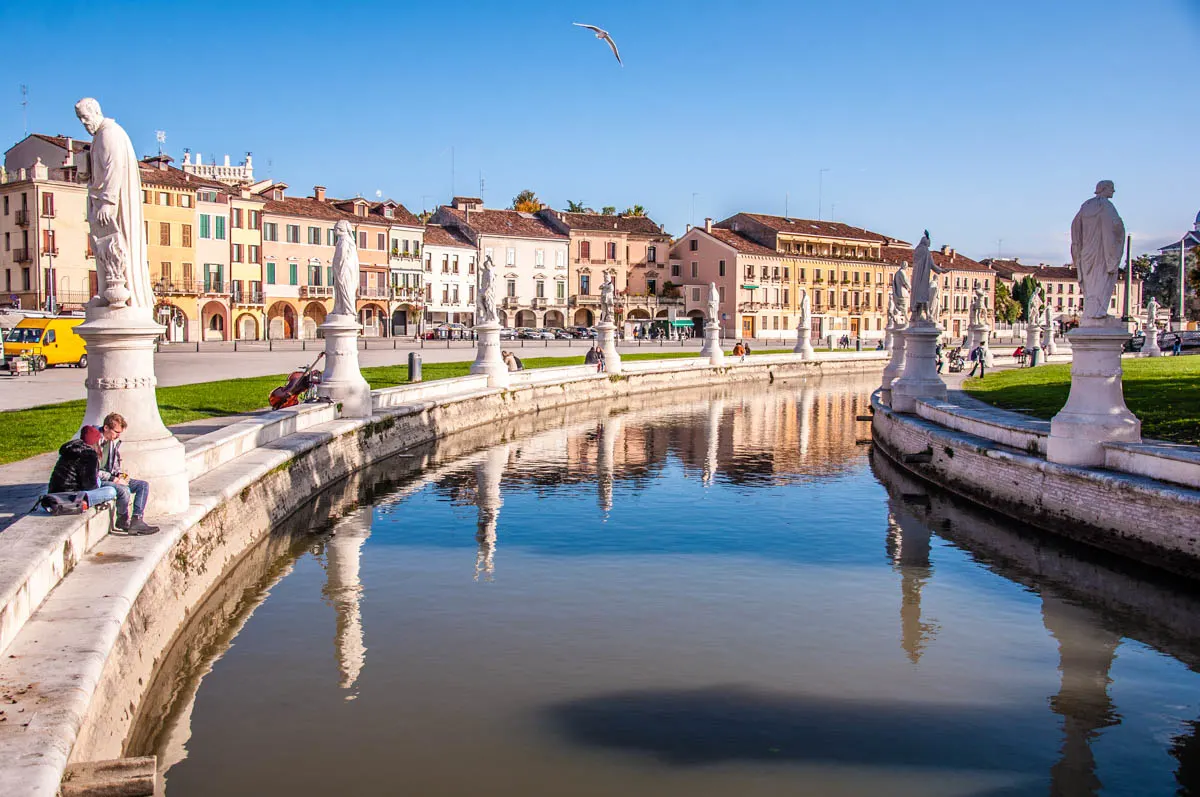
Add to this the world’s oldest academic botanical garden, Italy’s largest square, Italy’s second-oldest University (which is also the fifth oldest in the world), and one of Italy’s oldest coffee shops that is still serving excellent coffees nowadays, and Padua becomes a truly unmissable destination on any travel wish list.
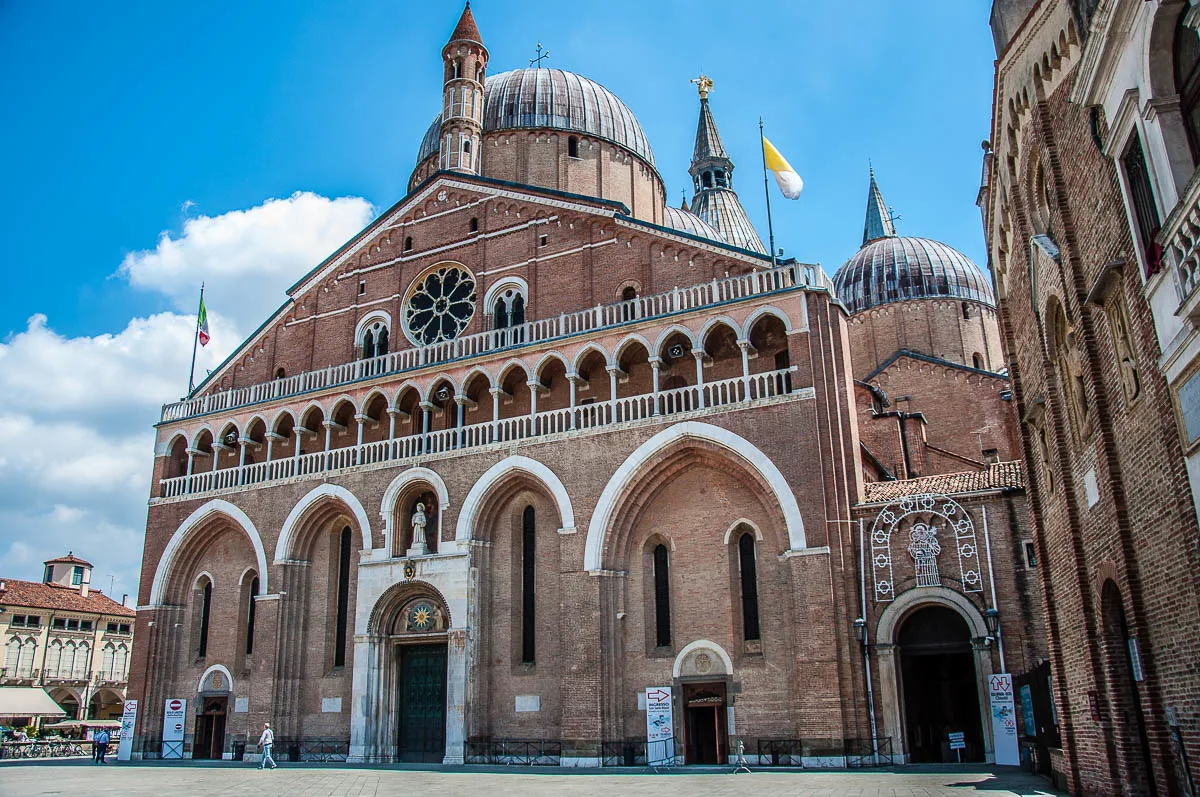
Plus, this very atmospheric city also has its own Saint! St. Anthony of Padua is highly venerated here and the Basilica that is dedicated to him houses some of the most precious works of Italian art.
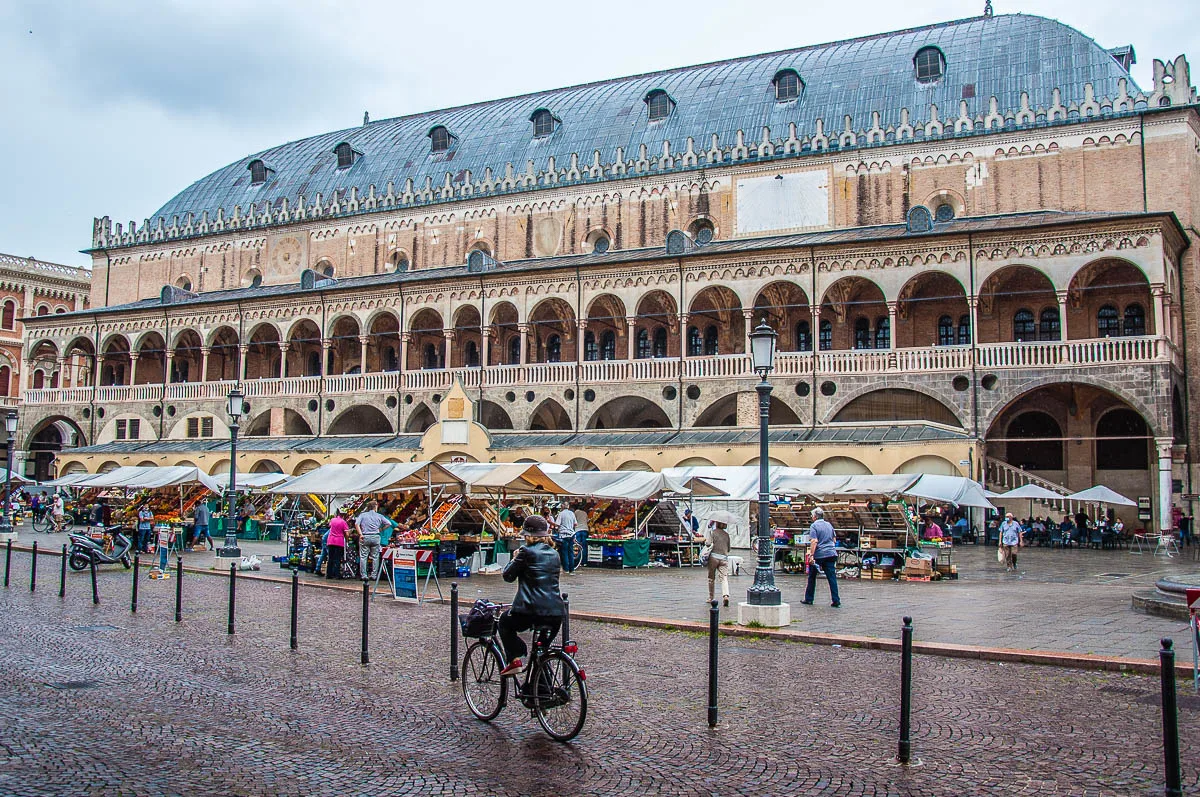
So, in case you are raring to go but are unsure where to start from and how to organise your Padua day trip, fear not.
In this blog post, I will share with you Padua’s top sights and 13 best things to do here in one day. I will also show you how you can see them all in a logical sequence that is coordinated with the different sights’ opening times.
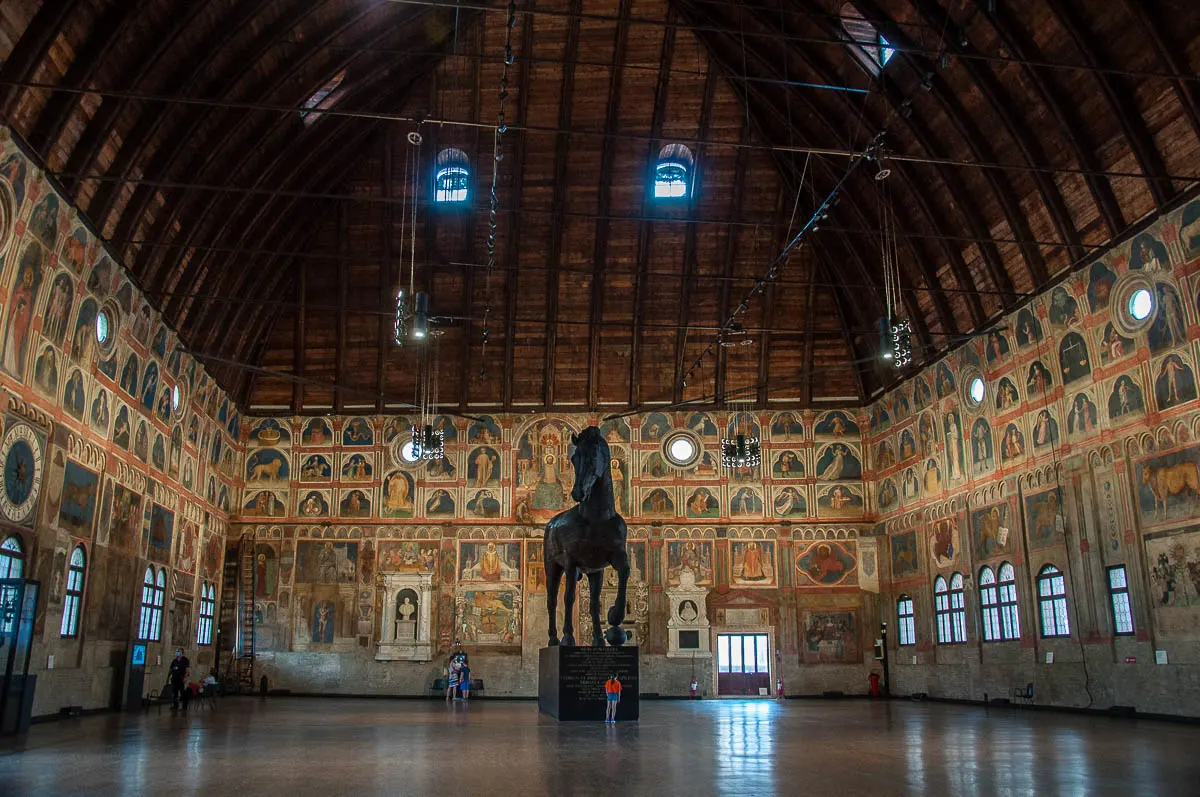
Starting at 9:00 am in the morning and ending at 7:00 pm, this is a long day of sightseeing and taking lots of history, culture, and even nature in. It’s a whirlwind of a day but by the end of it, you will feel really pleased with yourself for having seen so many wonderful things, for having enriched your knowledge of Italy, and for having delighted your soul with so many beautiful views.
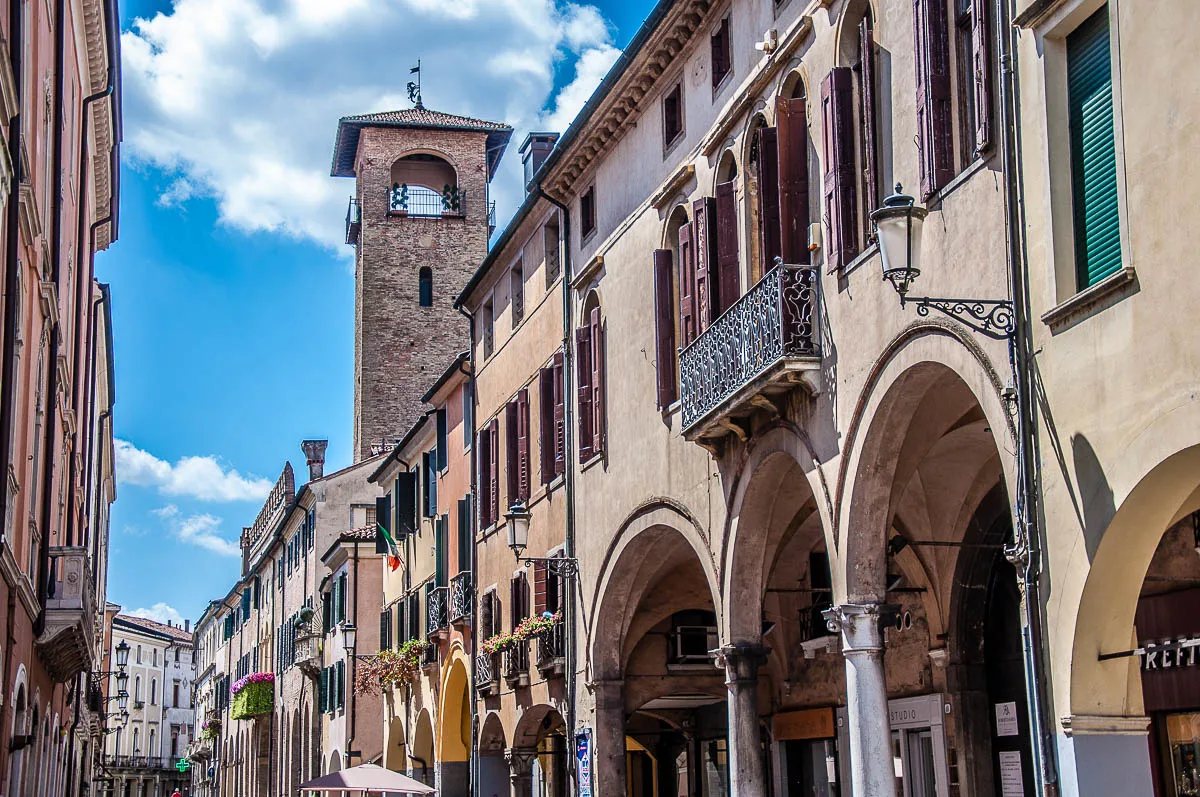
I have provided lots of first-hand tried and tested information coupled with many pictures to give you a good idea as to what to expect. A map is embedded towards the end of this blog post and it shows you the locations of the different sights.
This itinerary is based on my first-hand experiences of visiting and revisiting Padua almost weekly in the span of the six years that I spent living in Italy. I traversed this gorgeous Italian city from end to end, falling in love with its major sights and uncovering its hidden corners over and over again.
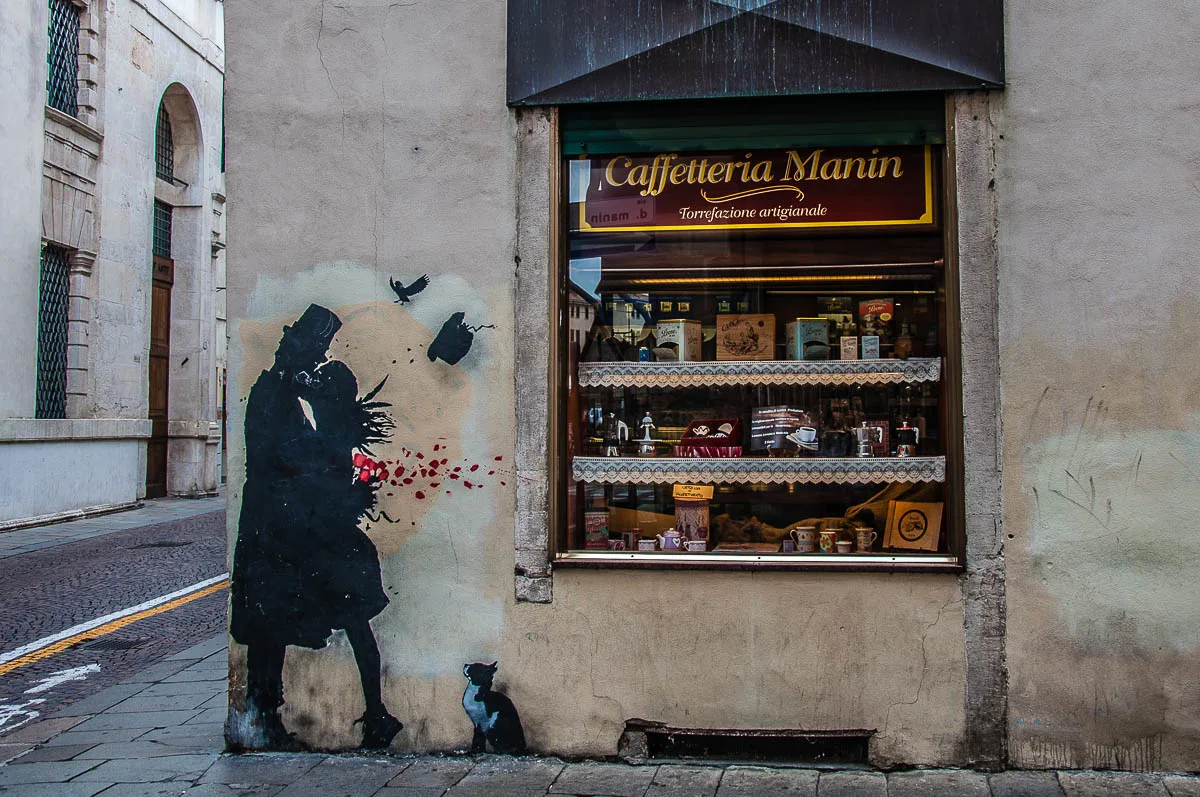
When constructing this itinerary of the 13 best things to do in Padua in one day, I organised all the sights in a logical sequence in terms of distance from one another, their location in the city, and their opening hours at the time of writing this blog post. If you follow the itinerary as it is, you will be able to see the best that Padua has to offer in a smooth and clear way without having to crisscross the city up and down time and time again.
The itinerary is valid in all seasons and is suitable to follow as it is from Monday to Friday. If you are visiting Padua on a weekend or a bank holiday though, the sequence given below needs to be rejigged a little bit. I have provided a note of why and how to do this under point 11 below.
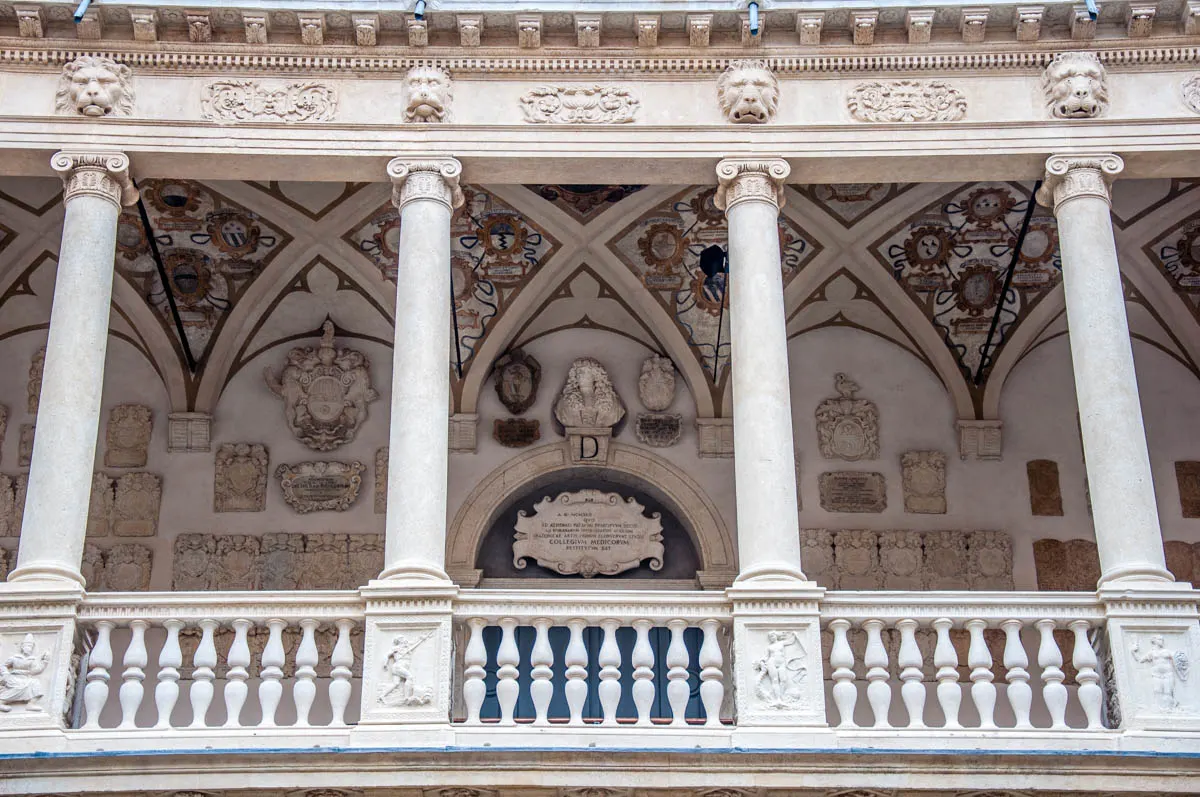
For added help, at the end of this blog post, I have also included a list with some practical do’s to make your day in Padua, Italy as smoothly running as possible. Please, have a look at it as it will help you maximise your sightseeing opportunities.
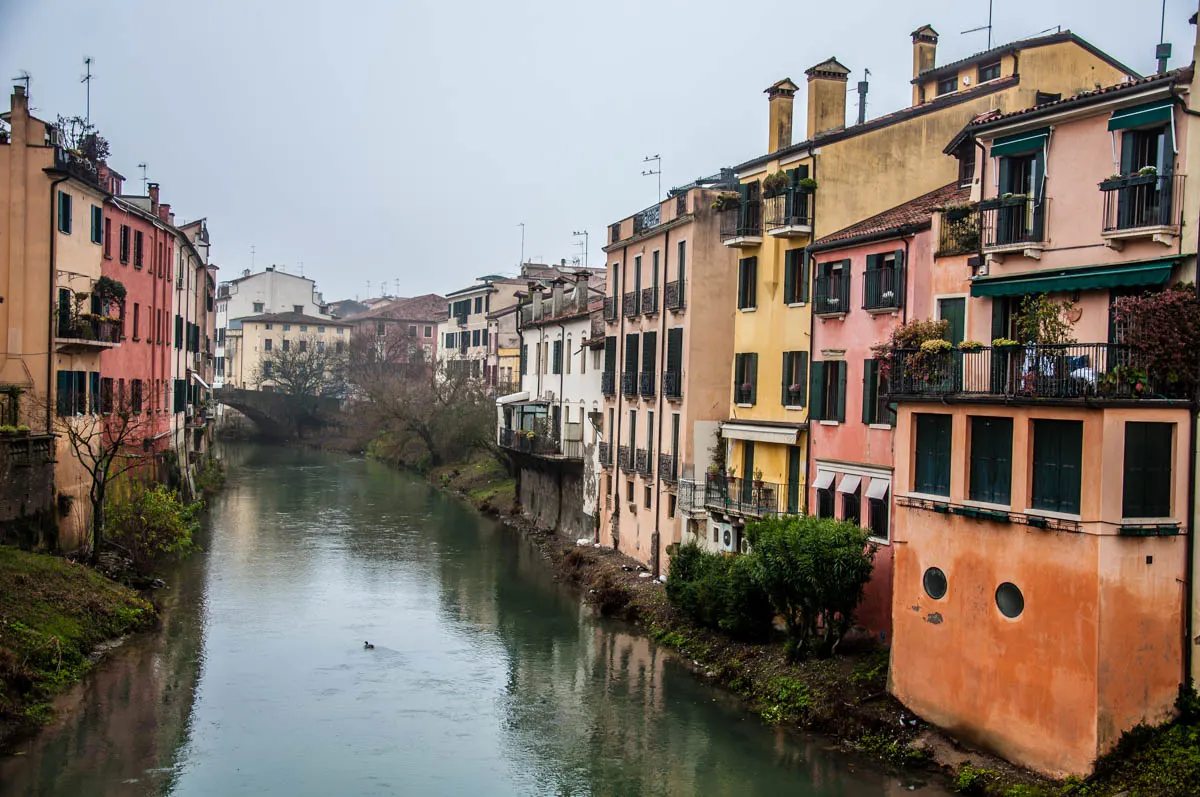
In any case, I need to insert a disclaimer here: please, note that this is just a sample itinerary and you can freely choose to follow it or not, to see all the sights on it or to skip some, to spend longer than suggested at some, and/or to change the order of visiting them. I composed the itinerary to share with you my love and appreciation for Padua and to show you how you can see and experience as fully as possible this wonderful Italian city in one day. At the same time, I don’t guarantee anything and I don’t promise that you will have a great time. It’s all in your hands!
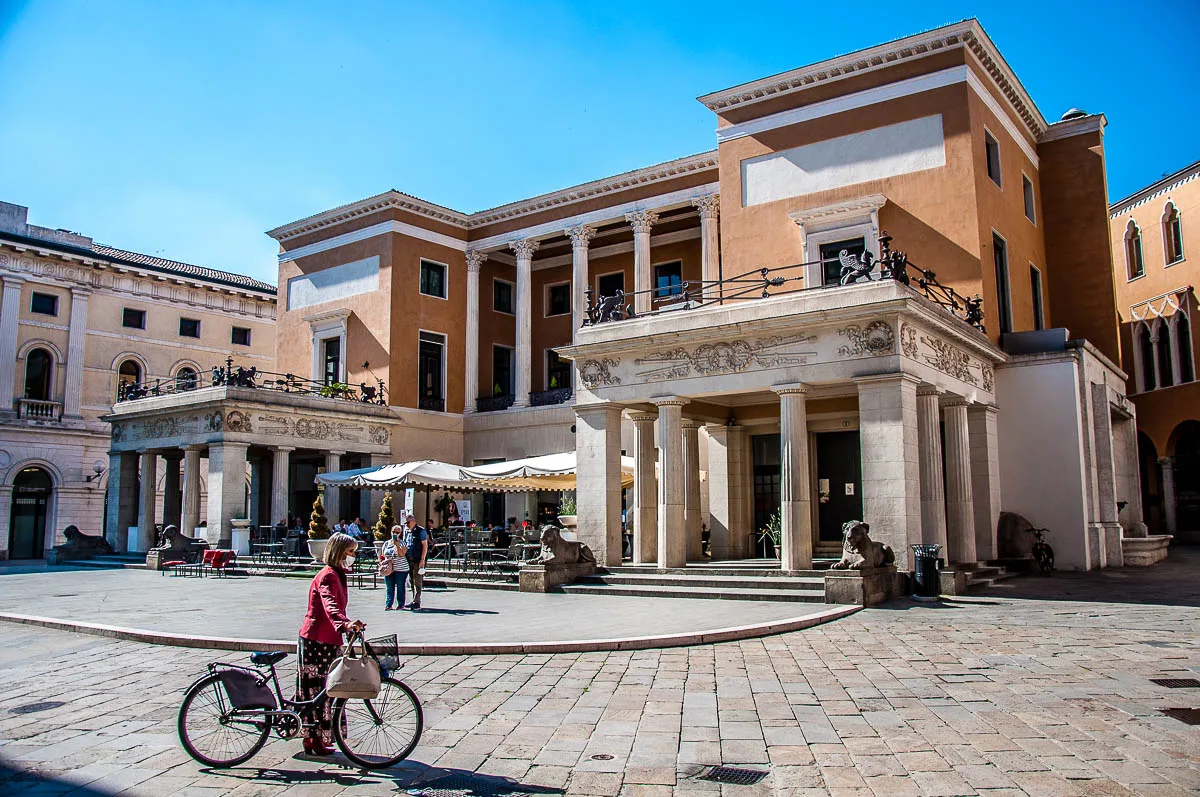
Padua has a lot to offer – from priceless frescoes to museums that are rich in artifacts, from lively coffee houses to markets that have been going strong for centuries. To fully feel and live the city, you need to see both its inside and outside spaces, for even a short walk around Padua’s squares can give you just as much insight into authentic Italian culture and life like a visit to the city’s most refined museum. As such, this itinerary takes you all over Padua’s historic centre and shows you its atmospheric hidden corners and the sparkliest gems in its crown. You decide how many of them you want to see!
Now, without further ado, let’s head to Padua, Italy. There is so much to see and do there, there is no time to lose!
13 Best Things to Do in Padua, Italy in One Day (Full Itinerary with Times, Photos, and Map)
Start
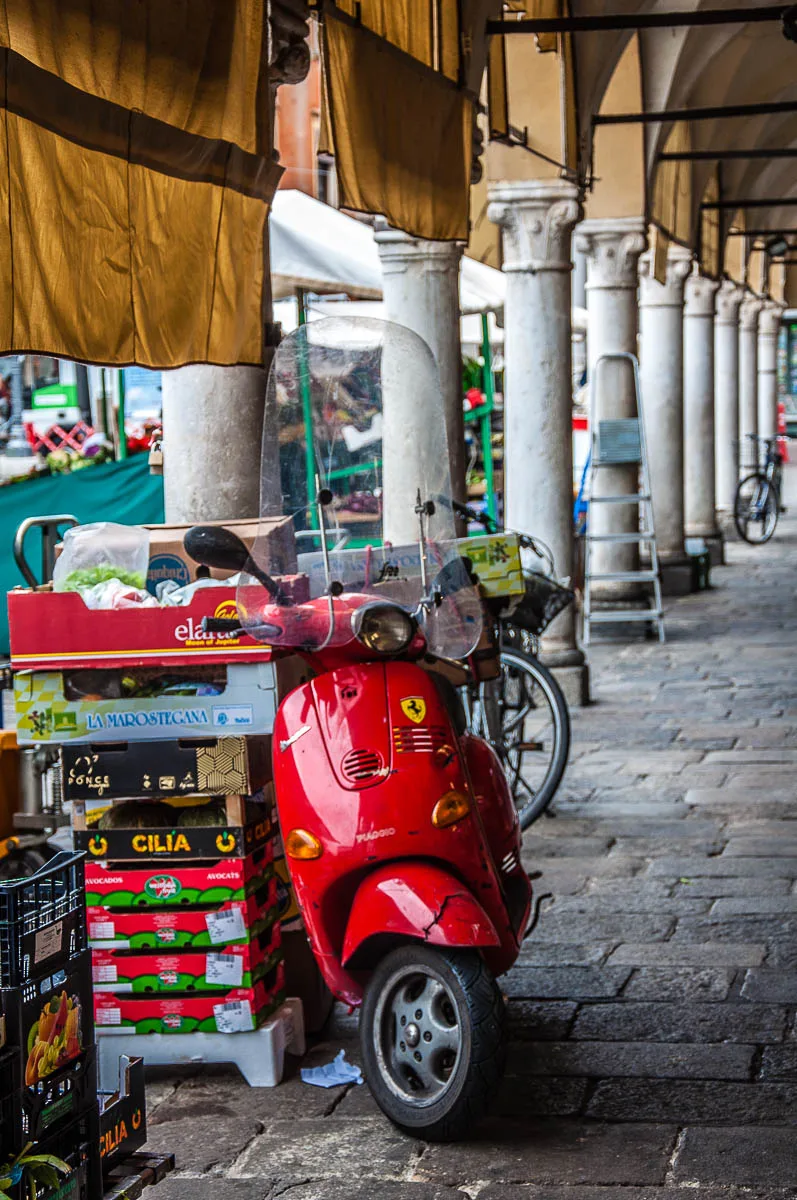
Aim to arrive in Padua at 9:00 am.
If you are arriving by train, get off at Padova train station. Buy a tram ticket from the kiosk just outside of the train station and then catch a tram from the Stazione FS tram stop in the direction of Capolinea Sud.
If you are driving, a convenient car park to leave your vehicle at is Padova Centro Park (also known as Car Park Padua City Centre). Walk for 6 mins to the Trieste tram stop and get a tram in the direction of Capolinea Sud. Make sure that you buy a tram ticket in advance. You can do it online by using this website.
Please, have a look at this map of Padua’s tramway system to get an idea of its structure and the different tram stops.
Travel all the way to Prato della Valle tram stop. The journey takes around ten minutes or less, so you should be able to reach the first destination on this itinerary around 9:30 am at the latest.
1. Pratto della Valle
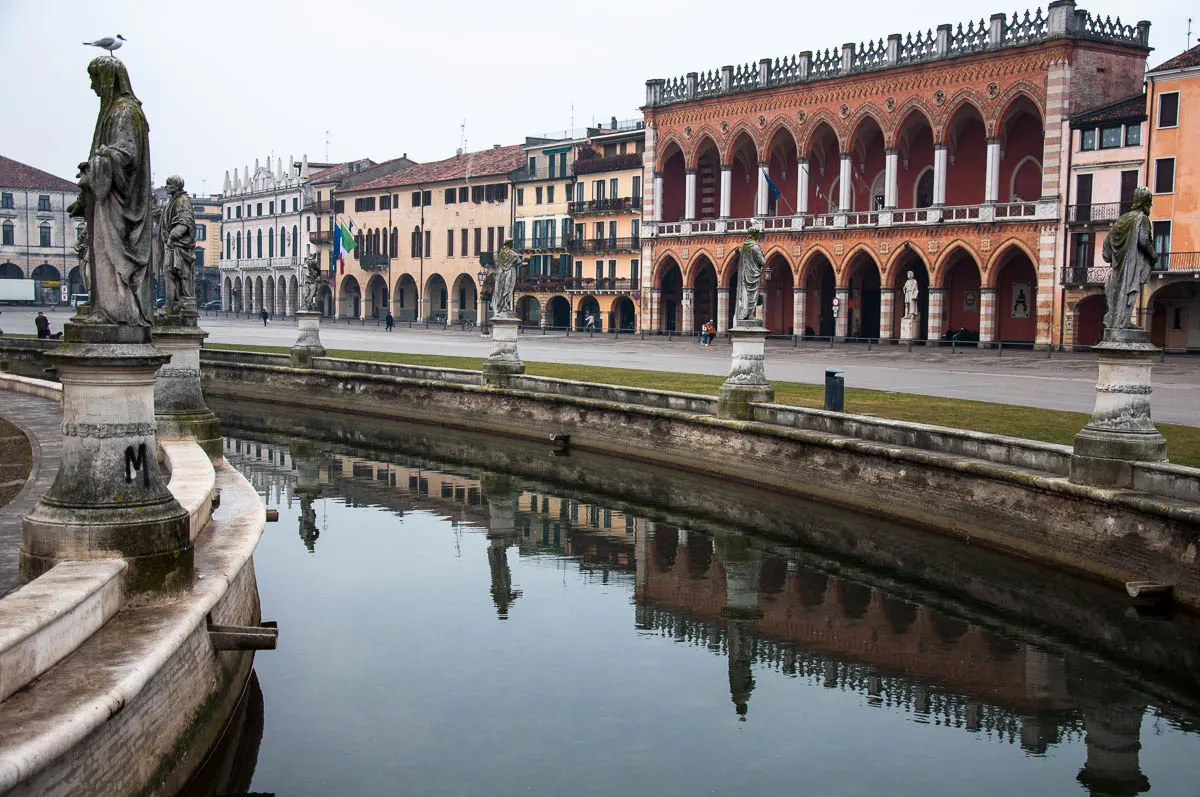
Suggested Time to Spend Here: 15 mins
Prato della Valle is Italy’s largest square and one of Padua’s main sights.
It has an area of 90,000 square meters and it’s elliptical in shape. The square is fringed by a canal surrounding an oval space known as the Isola Memmia (Memmo’s Island) after Andrea Memmo who created Prato della Valle in the 18th century.
Two rings of statues run along the canal. They are 78 in total and they represent famous people connected with the history and culture of Padua.
For example, statue number 36 is of Galileo Galilei who, in his own words, ‘spent the happiest 18 years of his life living and teaching in Padua’! Statue number 35 is of the renowned humanist and poet Petrarch who was a regular visitor to Padua in the 14th century. And statue number 21 is of the eminent Renaissance artist Andrea Mantegna who studied and worked in Padua. In fact, ticking point 12 in this list will allow you to see Mantegna’s famous cycle of frescoes in the Church of the Eremitani in Padua.
Prato della Valle is where many of Padua’s main events and festivals take part. Markets selling fresh produce, vintage items, and bric-a-brac are regularly held here, too.
Have a quick look around Pratto della Valle. It offers wonderful photo opportunities. The elegant building of the Lodge Amulea and the gigantic body of the Basilica of Santa Giustina are great to capture in pictures.
By 9:45 am start walking to the next stop on this itinerary with the best 13 things to do in Padua, Italy in one day.
The Basilica of St. Anthony of Padua is only 5 minutes away from Pratto della Valle and you should be able to reach it by 9.50 am by following these directions.
2. Basilica of St. Anthony of Padua
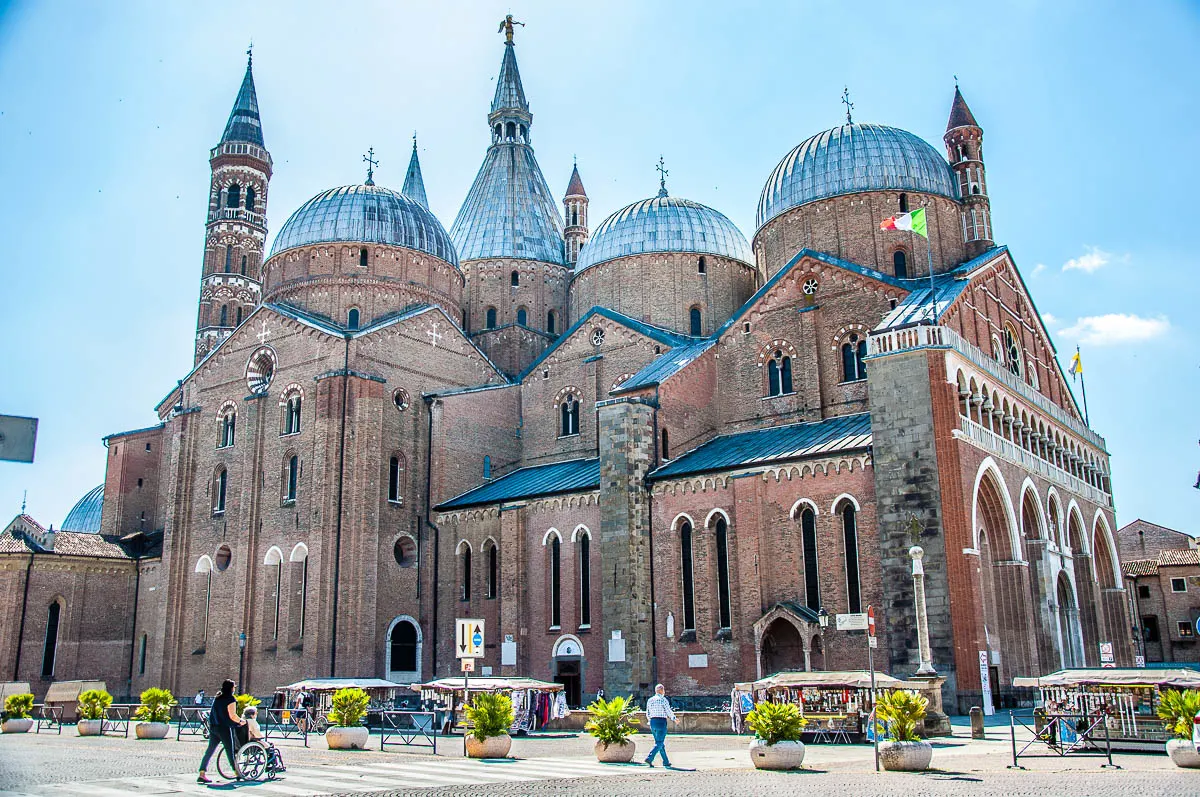
Suggested Time to Spend Here: 1 hour 15 mins
Padua is known as the City of the Saint due to the locals’ heartfelt devotion to St. Anthony. Traditionally, the citizens of Padua use the term Il Santo to refer both to the Saint and to the exquisite basilica that houses his relics.
Initially built between 1232 and 1310 and then modified several times through the centuries, the Basilica of St. Anthony is Padua’s most important religious sight. Every year, five million pilgrims visit the Basilica. With its architectural mix, splendid frescoes, numerous chapels housing precious relics and a treasure trove of masterpieces, the Basilica is a must-see.
Plan to spend about an hour and a quarter here paying special attention to the following highlights:
- Chapel of St. Anthony – a splendid Renaissance work-of-art where people pray in front of the Saint’s tomb;
- Chapel of the Relics (Treasury Chapel) – here you can see the Incorrupt Tongue of St. Anthony as well as many other relics. The attention to detail and the mastery that were employed in the design and making of the many reliquaries, chalices, and other religious objects that are preserved here are truly stunning.
- Presbytery and Main Altar – a splendidly frescoed and decorated environment with 15th-century statues and bas-reliefs by Donatello. These are the Basilica’s most precious works of art. For more about Donatello and Padua, see the small note at the end of this entry.
- Cloisters – beautiful, well-kept, and with fragments of frescoes preserved.
- Museums of the Basilica – where you can learn more about the life and work of St. Anthony and admire some of the many pieces of art owned by the Basilica.
- Oratory of St. George and School of the Saint – two small buildings just outside by the main body of the Basilica. Inside the first, you can admire one of the most precious fresco cycles of the 14th century. The second has a cycle of frescoes by Titian and other renowned local painters.
Please, keep in mind two things:
One is that, usually, at 10.00 am a mass is held in the Basilica. If you don’t want to attend mass, you can spend the first half of your time exploring the cloisters, the Museums, the Oratory of St. George, and the School of the Saint. Then, you can use the rest of your time to see the major points of interest inside the Basilica itself and to discover many other treasures and hidden corners there, too.
The second thing to keep in mind is that there is a combined entrance fee for the Museums, the Oratory of St. George, and the School of the Saint. It is not expensive and it’s really worth it.
When visiting the Basilica of St. Anthony of Padua, please, make sure that you are dressed appropriately. Shoulders and knees should be covered at all times. If the day is particularly hot, you can bring a lightweight scarf to wrap around your shoulders.
Donatello in Padua: Donatello – one of the most renowned sculptors of the Italian Renaissance – lived and worked in Padua for ten years. Right outside of the Basilica of St. Anthony of Padua, you can admire an equestrian statue by Donatello. It depicts the powerful military commander Gattamelata and it was the first full-size equestrian statue to be cast since antiquity. The house in which Donatello lived during his time in Padua is opposite the Basilica, too. A plaque affixed to it testifies to this fact.
By 11:05 am start walking to the next stop on this itinerary with the best 13 things to do in Padua, Italy in one day.
Padua University Botanical Garden is only 3 minutes away from the Basilica of St. Anthony of Padua and you should be able to reach it by 11.10 am by following these directions.
Official website: Basilica di Sant’Antonio di Padova
3. Padua University Botanical Garden
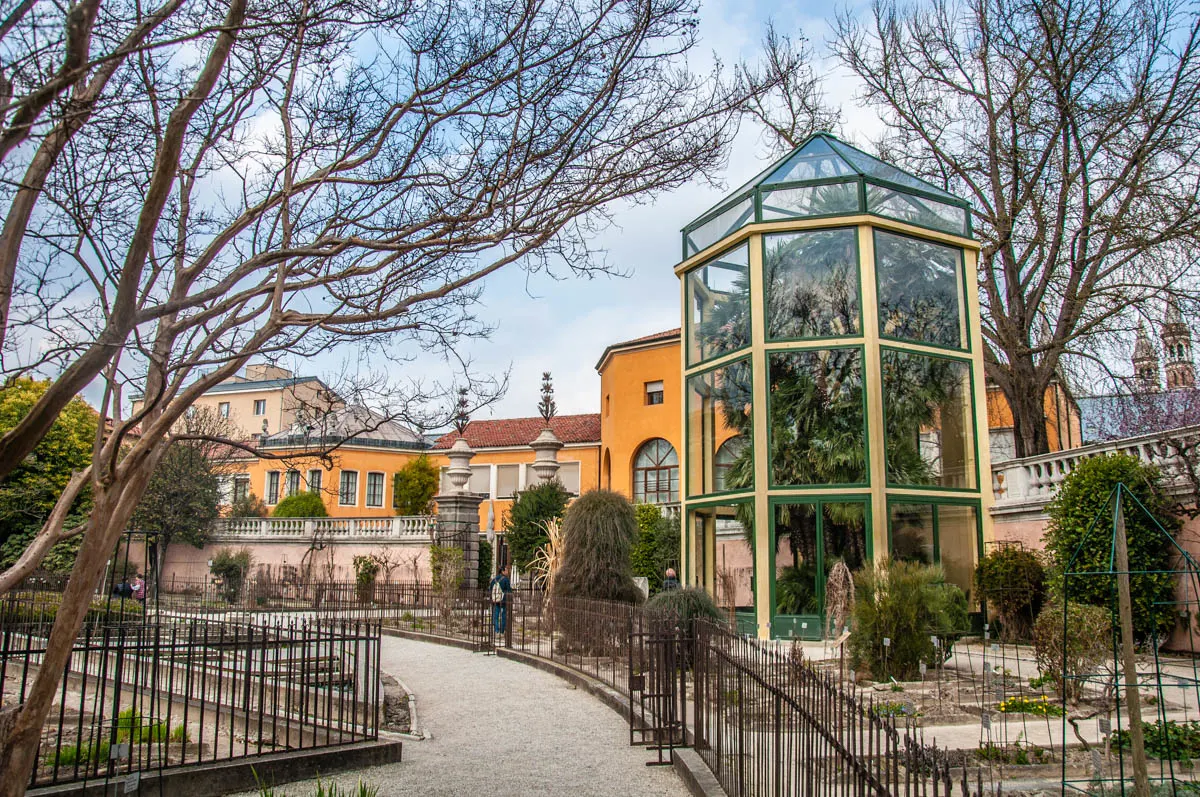
Suggested Time to Spend Here: 1 h
Padua’s Botanical Garden is the oldest University Botanical Garden in the world that still remains at its original location. It was founded in 1545 by the Venetian Republic to help Padua University’s students in their pharmacology and medicinal studies.
Nowadays, the garden is a UNESCO World Heritage Site. It houses over 7,000 botanical species. Among them is a palm tree that is over four centuries old. Goethe’s Essay on the Metamorphosis of Plants was inspired by the German writer’s visit to Padua University Botanical Garden where he came across this particular palm and spent time observing and studying it.
The botanical garden has two parts:
- Historical Garden – this is the original garden as it was first set up back in 1545. It’s in the shape of a circle (symbolizing the world) enclosing a square, which is then divided into four smaller squares. Fountains and water features are strategically positioned all throughout making it a lovely place to visit even on a hot summer day. The Historical Garden is surrounded by a tall circular wall (which was erected centuries ago to curtail the theft of precious medicinal plants!).
- Biodiversity Garden – this is the new part of Padua University Botanical Garden. Housed inside a modern glass building, it was opened in September 2014. A visit to it gives you a chance to walk through the world’s climate zones – from the aridest to the most fecund – and admire the vegetation native to each one of them.
Padua University Botanical Garden has played an important scientific role in the development of botany and pharmacology. It was also through it that several important for the economy plants like sunflowers and potatoes were first introduced in Italy. Prospero Alpini – the garden’s director at the start of the 17th century – was the first European to describe the coffee plant and its medicinal properties.
The garden is lovely to visit, especially in spring and summer when everywhere you look, you see trees in bloom and lush plants. In addition, the informational displays in the Biodiversity Garden provide lots of interesting details to make you stop and think about the role of plants in our everyday lives.
By 12:10 am start walking to the next stop on this itinerary with the best 13 things to do in Padua, Italy in one day.
Via Umberto I is about 5 mins away from Padua University Botanical Garden and you should be able to reach the top of Via Roma by 12:45 am by following these directions.
Official website: Orto Botanico Universita’ di Padova
4. Via Umberto I and Via Roma
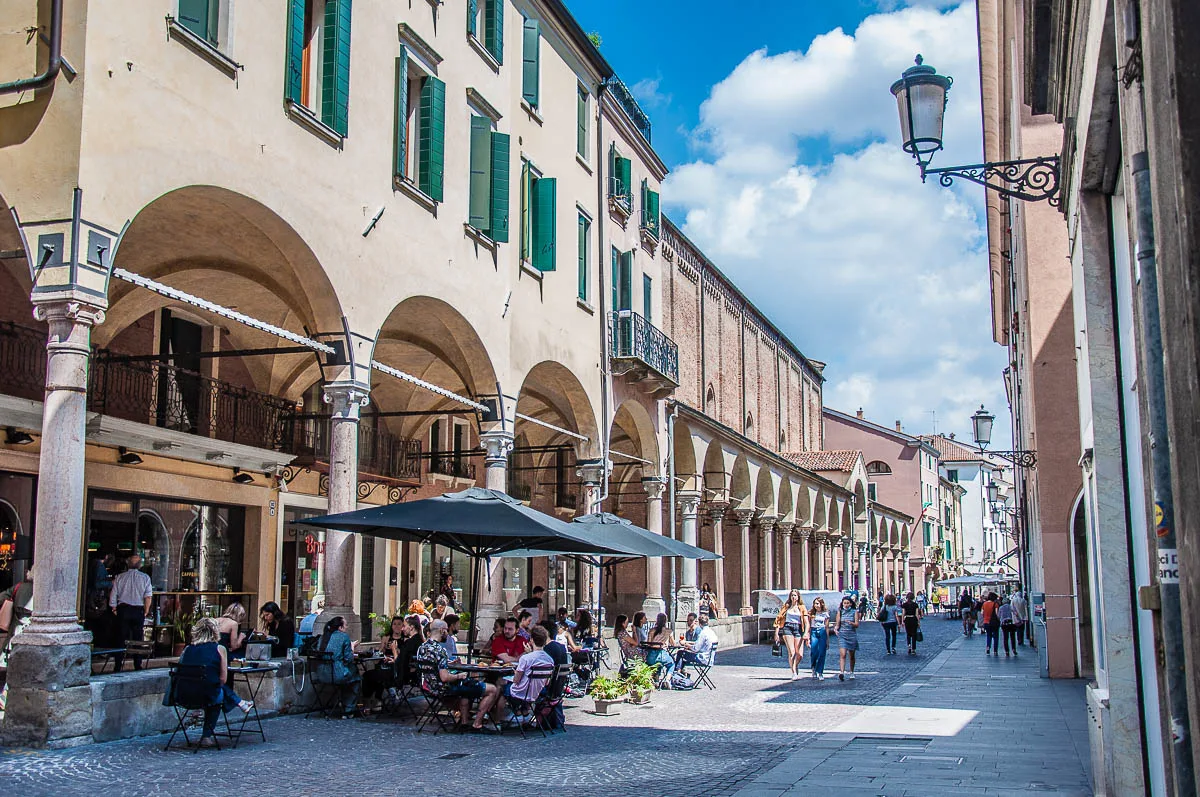
Suggested Time to Spend Here: 30 mins
At this stage in our itinerary, you will go for a walk along two of Padua’s most elegant central streets – Via Umberto I and Via Roma. Please, follow these walking directions.
Padua is a lively University town and its streets are dotted with cafes, bakeries, delis, gelaterias, and boutiques. Going for a nice stroll is really pleasant and it gives you a chance to feel the city’s vibe. Plus, there are many historic buildings and churches lining up both Via Umberto I and Via Roma, so everywhere you look, there will be a new discovery for you to admire and photograph.
Stop for a quick coffee, pop into a fashionable shop, light a candle in a church that is centuries-old, take photos of facades that have been weathered by the hands of time, take a photo from the Torricelle Bridge or just have a cone of gelato or two.
Here are a couple of sights that deserve your interest along the way (but don’t let them detract you from having a proper Italian espresso or enjoying a five-minute shopping spree in a cool boutique if this is what you prefer):
- Palazzo Capodilista – one of Padua’s largest palaces, this medieval building has a 35-meter tall tower that was built in the 12th century;
- Church of Santa Maria dei Servi – a 14th-century church with a huge portico running alongside Via Roma. Inside you will find plenty of works of art, including a crucifix by Donatello.
By 12:45 pm you should be at the top of Via Roma, so start walking to the next stop on this itinerary with the best 13 things to do in Padua, Italy in one day.
Padua’s Piazza delle Erbe is only 1 minute away from the top of Via Roma and you should be able to reach it by 12.50 pm at the latest by following these directions.
5. Piazza delle Erbe, Piazza della Frutta, and Palazzo della Ragione
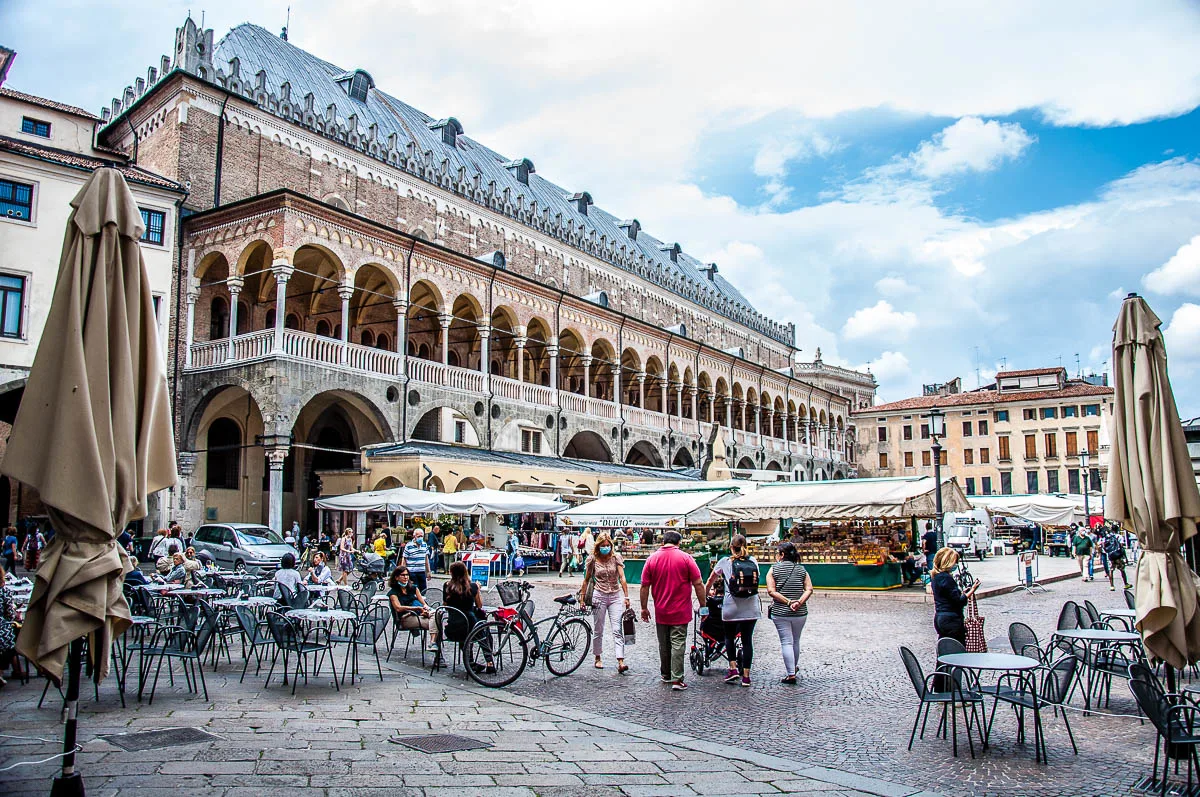
Suggested Time to Spend Here: 1 h 15 mins
Piazza delle Erbe and Piazza della Frutta are two of Padua’s most atmospheric squares. Each morning (Sundays excluded), a lively market takes place here with traders selling seasonal local produce on Piazza delle Erbe and all sorts of clothes and household items on Piazza della Frutta. The market has been going on for eight hundred years and is part of Padua’s and Italy’s living history.
Browse for a few minutes the stalls and take visual delight in the piles of white asparagus in spring, apricots in summer, chestnuts in autumn, and tangerines in winter. Then head to Palazzo della Ragione. This is the imposing building that is sandwiched between the two piazzas and serves as the market’s stunning backdrop.
A medieval town hall, Padua’s Palazzo della Ragione has a long and illustrious history. It has three levels:
- the top floor – locally known as Il Salone – is a huge richly frescoed hall. This is where meetings and tribunals deciding the fate of Padua and its citizens were held for centuries. To see it, you need to buy a ticket. It’s more than worth it. The medieval frescoes are truly outstanding and represent the cycle of life. Plus, the Palazzo’s enormous terrace opens beautiful views over the adjacent Piazza delle Erbe. You will see the ticket office on your left-hand side as you go up the large stone steps that lead to the Palazzo’s terrace.
- the ground floor – locally known as Sotto il Salone – is where delis, cafes, bakeries, fishmongers, butchers, pasta makers, and many more exquisite food shops are located. Some consider it to be the world’s first covered shopping centre for food has been sold along its vaulted walkways for over 800 years. It’s a great place to explore the culinary delights of Padua and Italy.
- the underground level is where many Roman ruins have been excavated. For centuries, Padua was a flourishing Roman city – second only to Rome in terms of its financial prosperity. Unfortunately, the underground level of Padua’s Palazzo della Ragione is only rarely open to the public, so it is likely that you won’t be able to see it if you are in town for just a day.
Now is a good time to grab some lunch from one of the many delis, bakeries, and cafes here. It could be a tramezzino or two (a crustless triangular sandwich with a delicious filling), a piadina (a tasty toasted wrap with a variety of fillings), a bowl of pasta made on-site or something else that won’t take you ages to eat and yet will give you a good idea of the quality and the variety of the food sold at Sotto il Salone and around the two adjacent squares.
By 2:05 pm start walking to the next stop on this itinerary with the best 13 things to do in Padua, Italy in one day.
Padua’s Piazza dei Signori is less than 5 minutes away from Piazza delle Erbe and you should be able to reach it by 2:10 pm at the latest by following these directions.
6. Piazza dei Signori and Astronomical Clock
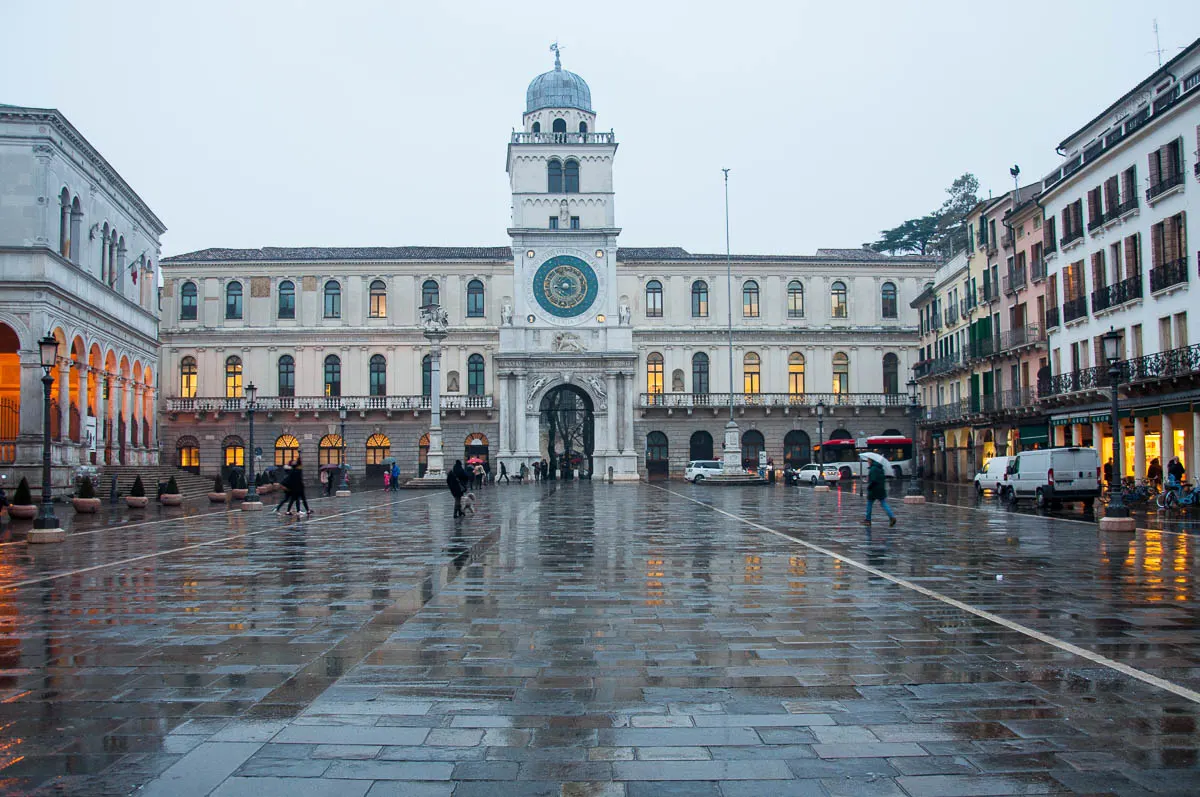
Suggested Time to Spend Here: 15 mins
Piazza dei Signori is one of the most beautiful squares in Padua, Italy. Historically, it was the most important open public space in town, too. This is where the rulers (or Signori) of Padua used to live and work. They were assigned by the Republic of Venice to which Padua belonged for close to four centuries.
During the day, Padua’s Piazza dei Signori hosts a lively market that disbands in the early hours of the afternoon. The market stalls are then cleared out and you can enjoy the immense expanse of the square and admire the beautiful buildings that surround it. And then, in the evening, the adjacent cafes and bars place their tables outside and the square becomes a lively place to meet up with friends and relax over a glass of aperitivo or two.
There are several buildings of interest around Padua’s Piazza dei Signori.
The most striking one is the clock tower with its astronomical clock. Look at it closely and soon you will notice that it has a 24-hour clock face on which 11 instead of 12 zodiacal signs are depicted. The missing one is Libra. Another curious thing about the clock is that it follows the geocentric model of the Solar System with the Earth and not the Sun in the centre of the dial.
My favourite building at Padua’s Piazza dei Signori though is the 16th-century Loggia del Consiglio (also known as the Loggia della Gran Guardia). Right in front of it, you will see the Colonna Marciana – a pillar at the top of which stands the symbol of the Republic of Venice – the Winged Lion of St. Mark.
By 2:25 pm start walking to the next stop on this itinerary with the best 13 things to do in Padua, Italy in one day.
Padua’s Ponte Molino is just over 6 minutes away from Piazza dei Signori and you should be able to reach it by 2:35 pm at the latest by following these directions.
7. Ponte Molino, Porta Molino, and Ezzelino’s Tower
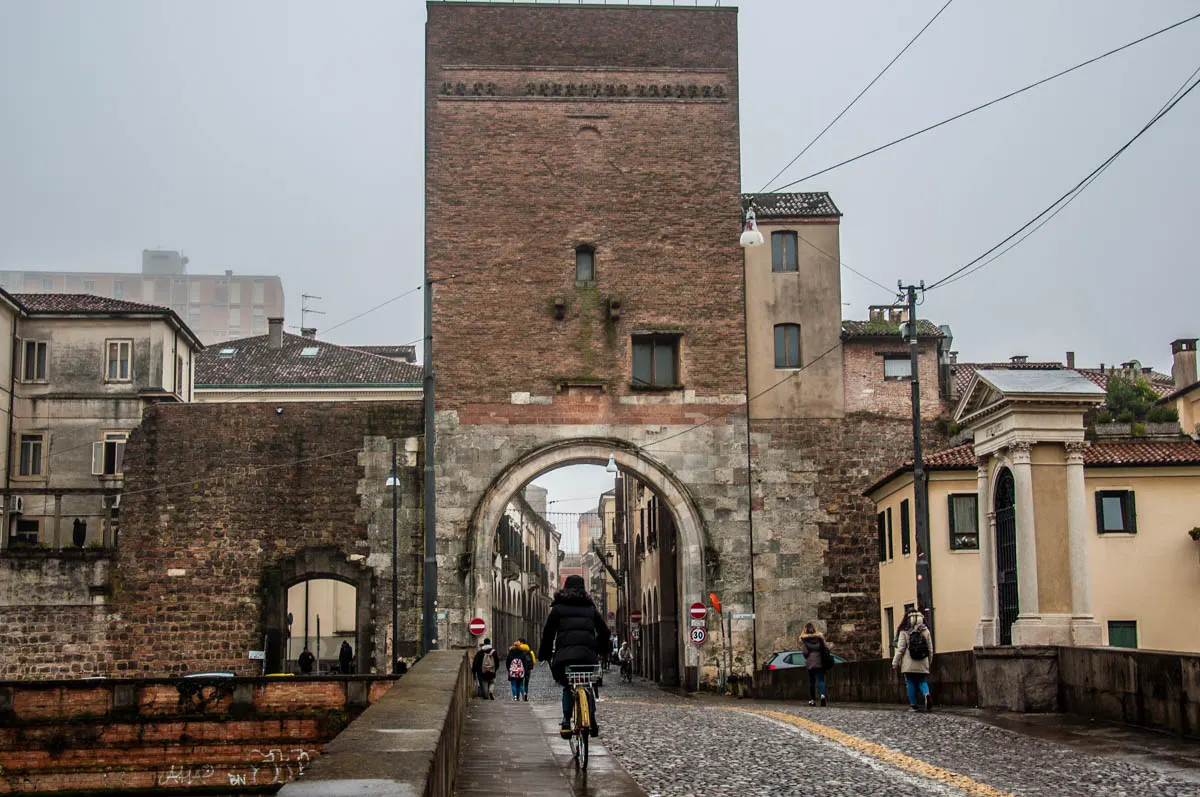
Suggested Time to Spend Here: 15 mins
Ponte Molino is an ancient Roman bridge with five arches. It was originally built between 30 and 40 AD and it opens picturesque views over the river Bacchiglione. It is one of few surviving Roman bridges in Padua and one of the very few ancient bridges built to be crossed not just by pedestrians but also by vehicles.
Its current name – Molino – the bridge owes to the fact that from the 10th up to the end of the 19th century, a number of floating watermills operated right next to it.
The street that crosses over the bridge used to be Padua’s most important street. It was known as Stra’ Maggiore and it was guarded by a tall tower – Torre di Ezzelino – built by a famous medieval tyrant. You can still see the tower at the far end of the bridge but your imagination may be captured by another imposing structure that flanks Ponte Molino – the so-called Porta Molino.
Porta Molino is a large gate that was erected in the 13th century. It used to be the most important of the gates in Padua’s medieval defensive walls. According to the locals, the height of the gate was such that Galileo Galilei used it as an observatory for his studies of the night sky.
By 2:50 pm start walking to the next stop on this itinerary with the best 13 things to do in Padua, Italy in one day.
Padua’s Piazza Molino is just over 7 minutes away from Ponte Molino and you should be able to reach it by 3:00 pm at the latest by following these directions.
8. Baptistery, Duomo, and Diocesan Museum
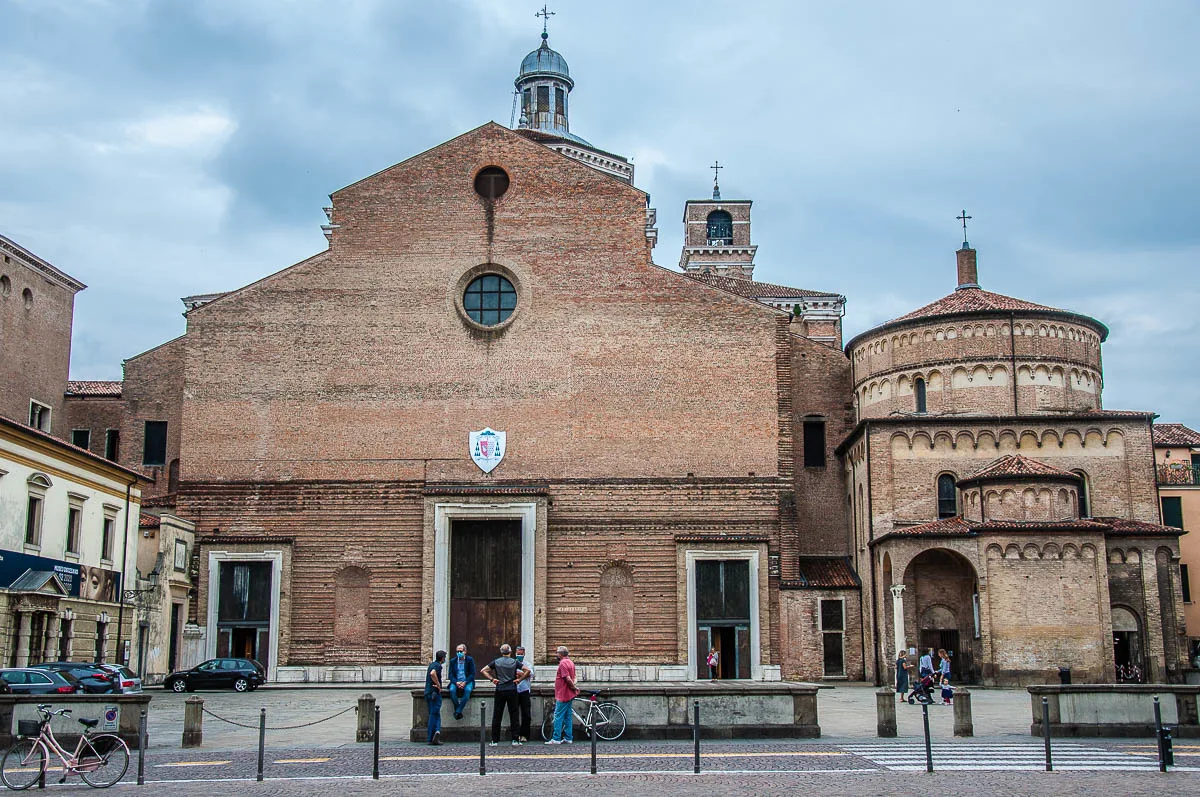
Suggested Time to Spend Here: 1 h
To reach Padua’s Piazza Duomo from Ponte Molino, you will retrace your steps back to Piazza dei Signori (see point 6 above) and from there you will need to continue straight ahead for a minute or two max.
Piazza Duomo is a small square in Padua flanked by two buildings of interest – the Baptistery and the Diocesan Museum. Between them stands Padua’s Duomo which is quite sterile both in terms of its facade and its interiors, so pop in to tick it off your list but keep the bulk of your time here for the other two sights.
These are the reasons why:
- Baptistery – this small and plain on the outside building preserves inside one of the most precious fresco cycles of the 14th century. Painted by Giusto de Menabuoi, it is incredibly detailed and it takes you on a Biblical journey. The effect of looking up at the ceiling where Christ Pantocrator is surrounded by concentric circles of angels and saints is truly hypnotic.
- Diocesan Museum – housed in the 15th-century residence of the Bishops of Padua, it has a lovely collection of religious art. Of great interest and impact is the series of frescoes in the Bishops’ Hall. It depicts the first hundred Bishops of Padua. The frescoes were originally painted by Bartolomeo Mantegna and subsequently re-worked and re-touched through the centuries.
Please, note that the Baptistery and/or the Diocesan Museum may have reduced opening hours, may not be open every day, or may be open only partially during specific periods. Please, click on this link to check available time slots for visits and make sure that you buy your tickets well in advance if you want to follow this itinerary as it is given herewith.
In addition, you can consult the most up to date opening hours of the Diocesan Museum at this official link (in Italian).
It is very important to note that this itinerary is organised in a way to give you a chance to visit both the Baptistery and the Diocesan Museum but, please, do check their most up to date opening days and hours as much in advance as possible and pick the day to spend in Padua accordingly.
By 4:00 pm start walking to the next stop on this itinerary with the best 13 things to do in Padua, Italy in one day.
Padua’s Ancient Jewish Ghetto is just 2 minutes away from Piazza Duomo and you should be able to reach it by 4:05 pm at the latest by following these directions.
Official websites:
- Museo Diocesano di Padova (in Italian)
- Buy tickets online in advance
9. Ancient Jewish Ghetto
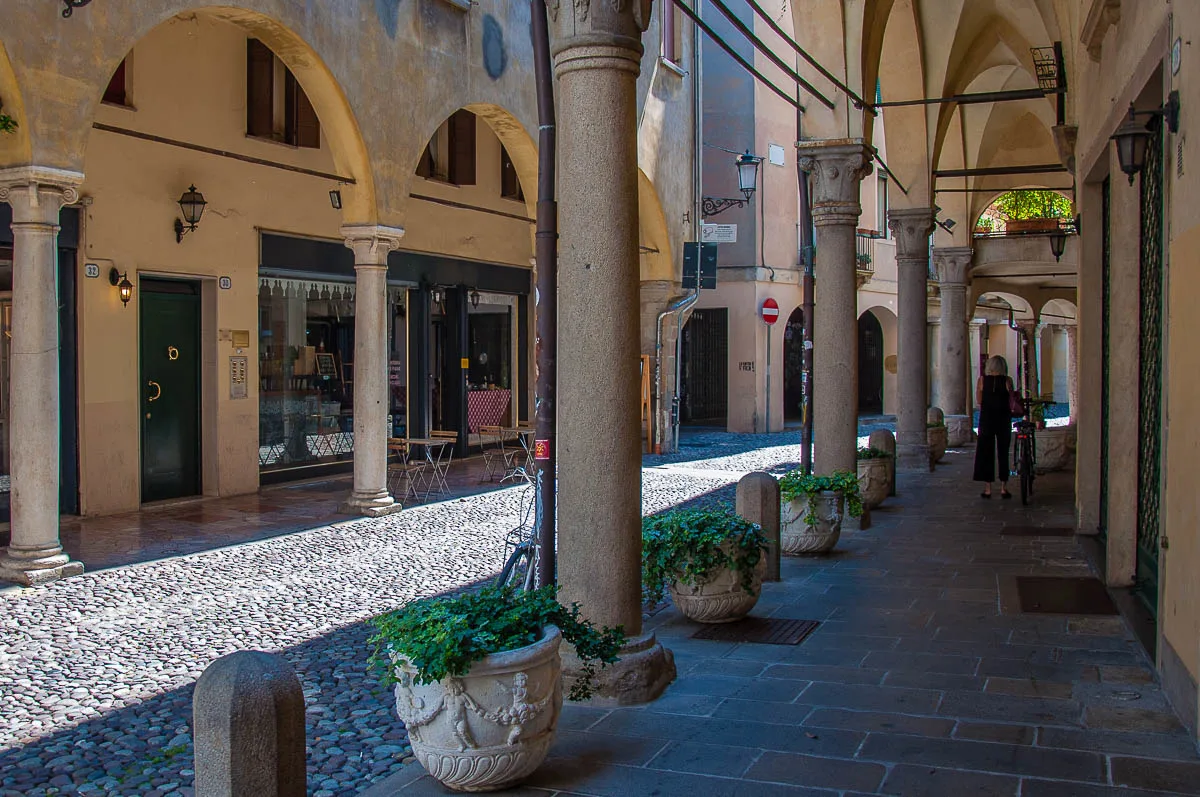
Suggested Time to Spend Here: 10 mins
Nowadays, lined up with small boutiques and lovely eateries, the narrow cobbled streets of the Ghetto have bore witness to the lives of the Jewish citizens of Padua over many centuries. There has been a Jewish presence in the city since the 11th century.
You can simply walk through this area, admiring the old buildings and following Padua’s seemingly endless covered walkways (called porticoes) to the next destination on this list. Hence, I have provided 10 minutes for this in our itinerary through Padua.
However, it has to be said that visiting the Jewish Heritage Museum is the best way to learn about Padua and the role its Jewish citizens have played in the history of this Italian city. The museum is very well curated and the ticket to it also includes a visit to the nearby 16th-century synagogue.
The opening hours of Padua’s Jewish Heritage Museum vary greatly depending on the day and the month. Please, have a look at them here and see if you would be able to visit the museum on the day you are in Padua. In this case, you will need to adapt this itinerary to your specific needs.
Otherwise, by 4:15 pm start walking to the next stop on this itinerary with the best 13 things to do in Padua, Italy in one day.
Padua’s Palazzo Bo – the historic seat of Padua University – is less than 5 minutes away from the Ancient Jewish Ghetto and you should be able to reach it by 4:20 pm at the latest by following these directions.
10. Palazzo Bo
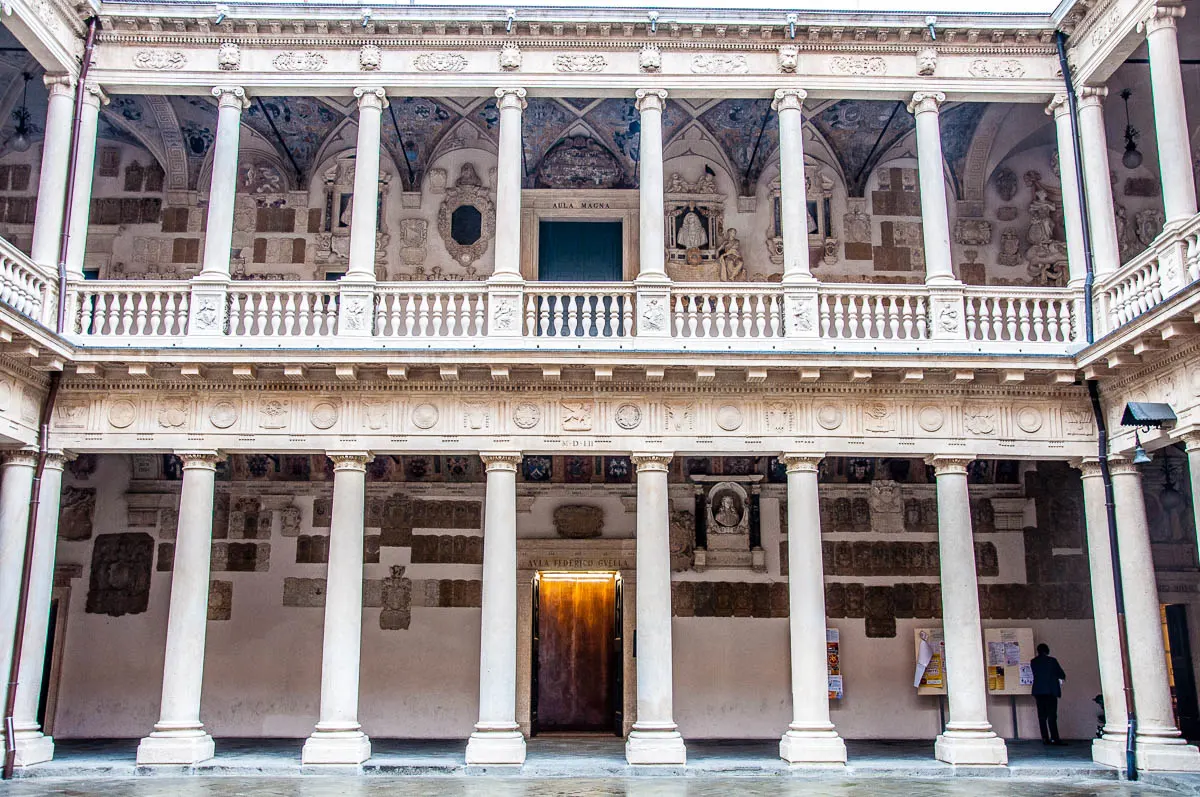
Suggested Time to Spend Here: 1 h
Beautifully frescoed, Palazzo Bo is the historic seat of the University of Padua which is the second oldest University in Italy and the fifth oldest University in the world.
Illustrious minds have studied and worked here through the centuries. Among them is Galileo Galilei who, in his own words, spent the happiest 18 years of his life living and teaching in Padua. At Palazzo Bo you can see the wooden desk from which Galileo used to give his lectures to a captivated crowd of students and citizens.
Elena Cornaro Piscopia – the first woman with a PhD in the world – is also an alumna of the University of Padua. You can see her statue and learn more about her incredible story during a visit to Palazzo Bo.
Important medical and scientific discoveries were made under the roof of this palace in the historic heart of Padua. The world’s first permanent anatomic theatre was installed here in the 16th century thus modernising medicine and helping it become the science we know it nowadays.
As such Palazzo Bo truly is a must-see in Padua!
While anyone can walk off the street and admire the frescoed monumental courtyard of Palazzo Bo, the historic halls and the anatomic theatre of the University of Padua can only be seen as part of a guided tour. To avoid disappointment, please, make sure that you book the guided tour in advance at this link (in Italian). You will find more useful information and the ticket office’s phone number at this link.
At the time of writing this blog post, the only guided tour in English from Monday to Friday is held at 4.30 pm. Hence, this itinerary is structured in such a way so as to allow you to be there on time for it.
On weekends and bank holidays, the guided tour in English is held at 12.30 pm. This means that you will need to rejiggle the itinerary a bit in order to be there on time.
An easy way to do it is to tick off the first three points of this itinerary as they are, then to leave Padua University Botanical Garden at 12:00, take the tram from either the Prato della Valle or the Santo tram stops to the Ponti Romani tram stop and from there to walk for 3 mins to Palazzo Bo following these directions.
Once your guided tour to Palazzo Bo has finished, you can continue with the itinerary from point 5 onwards and then just skip straight from point 9 to point 11.
Bear in mind that the weekdays’ guided tour lasts about 45 mins whereas the weekend’s guided tour lasts about 1 h 15 mins.
If you are visiting Palazzo Bo on a weekday, by 5:15 pm start walking to the next stop on this itinerary with the best 13 things to do in Padua, Italy in one day.
Padua’s Cafe Pedrocchi is literally a minute away from Palazzo Bo and you should be able to reach it by 5:20 pm at the very latest by following these directions.
Official websites:
11. Caffe Pedrocchi
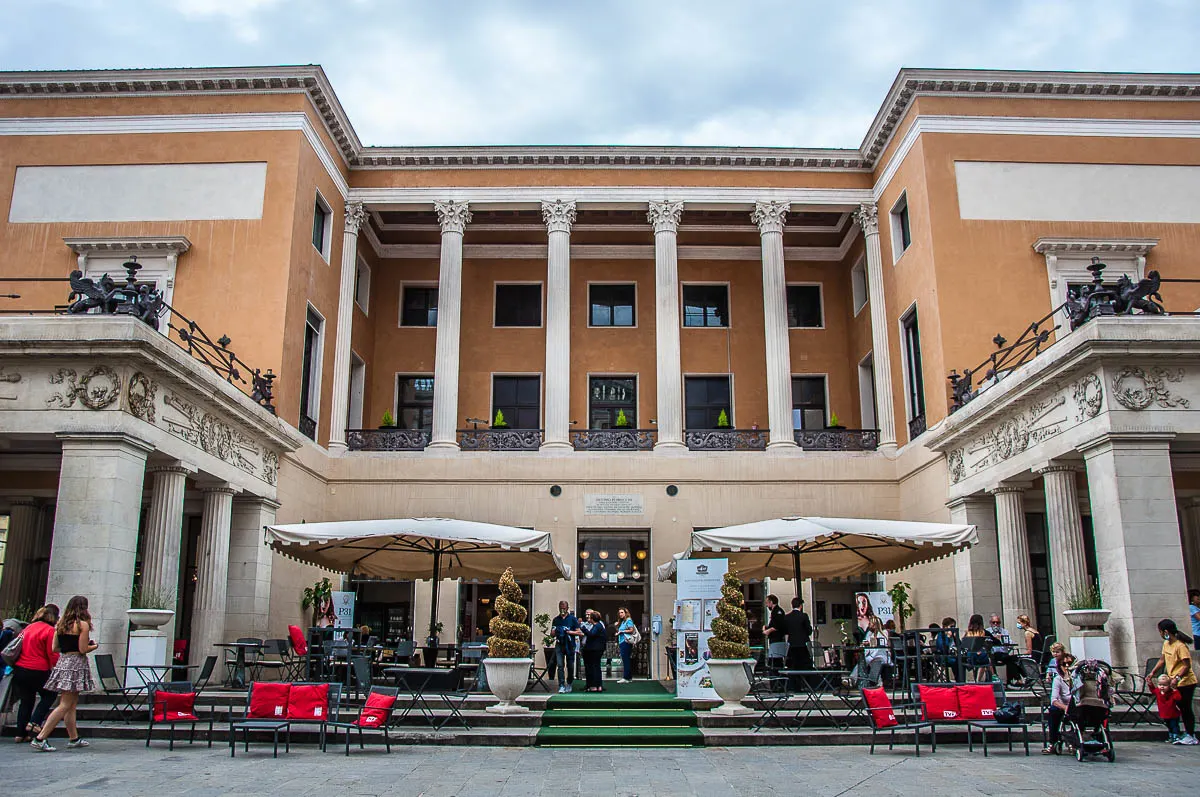
Suggested Time to Spend Here: 15 mins
It’s time for coffee and there is no better place to have it than at Padua’s historic Caffe Pedrocchi. Founded in 1772, this is one of Italy’s most legendary coffee shops. They used to call it ‘the cafe without doors’ as from 1831 (year of construction of its current grand premises) to 1916 it was open 24/7 and its doors were never closed.
Have a proper Italian espresso for a boost of energy after all the walking and sightseeing you have been doing on your day trip to Padua.
Even better, treat yourself to Caffe Pedrocchi’s specialty – a shot of 100% Arabica coffee with mint syrup, whipped cream emulsion, and a dusting of bitter cocoa. The secret is to sip it rather than gulping it down. This way the layers stay on top of one another and with every delicious sip you can taste the fragrant coffee, the energising mint, and the smooth cream, rounded off by the slight bitterness of the cocoa.
By 5:35 pm start walking to the next stop on this itinerary with the best 13 things to do in Padua, Italy in one day.
Padua’s Church of the Eremitani is 5 minutes away from Caffe Pedrocchi and you should be able to reach it by 5:40 pm at the latest by following these directions.
Official website: Caffe Pedrocchi (in Italian)
12. Church of the Eremitani
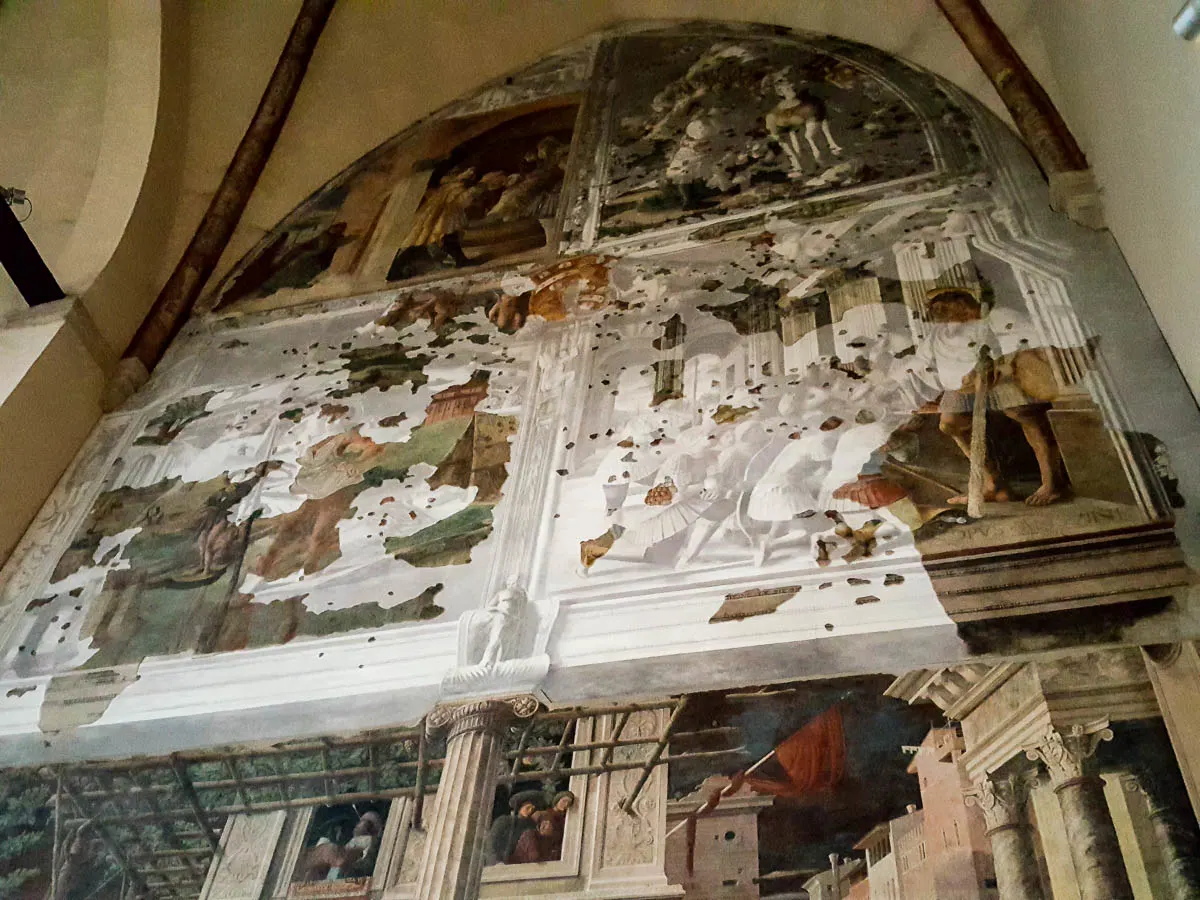
Suggested Time to Spend Here: 15 mins
The Church of the Eremitani has a compelling story to tell. Originally built in the 13th century and hosting a rich body of works of art, it was bombed by the Allied Forces during the Second World War. It all happened by mistake, they say, as the German headquarters in Padua happened to be close to the church. So, even though it was on a ‘do not bomb’ list of cultural heritage, it became a casualty of war.
The heaviest damage was borne by the church’s Ovetari Chapel. In the 15th century, it had been frescoed by a host of illustrious Renaissance artists. Among them, the name of Andrea Mantegna stands out. Mantegna painted as though he was a sculptor with a paintbrush in hand. His chiseled bodies, expressive faces, and perfect architectural backdrops have been attracting admiration for centuries. His paintings nowadays grace worldwide known museums and galleries.
When the bombs hit the Church of the Eremitani on 11th March 1944, Mantegna’s frescoes fell to the ground in 88 thousand fragments. This was Italy’s most devastating art casualty of war. Only many decades later and thanks to a sophisticated piece of software, the frescoes were pieced back together like a giant puzzle with many missing pieces. Standing in front of the restored frescoes you begin to understand how truly devastating wars are.
You can read more details about the Church of the Eremitani, the Ovetari Chapel, and Mantegna’s frescoes here.
By 5:55 pm start walking to the last stop on this itinerary with the best 13 things to do in Padua, Italy in one day.
Padua’s Scrovegni Chapel is only a couple of minutes away from the Church of the Eremitani and you should be able to reach it by 6:00 pm at the latest by following these directions.
13. Scrovegni Chapel and Eremitani Civic Museums
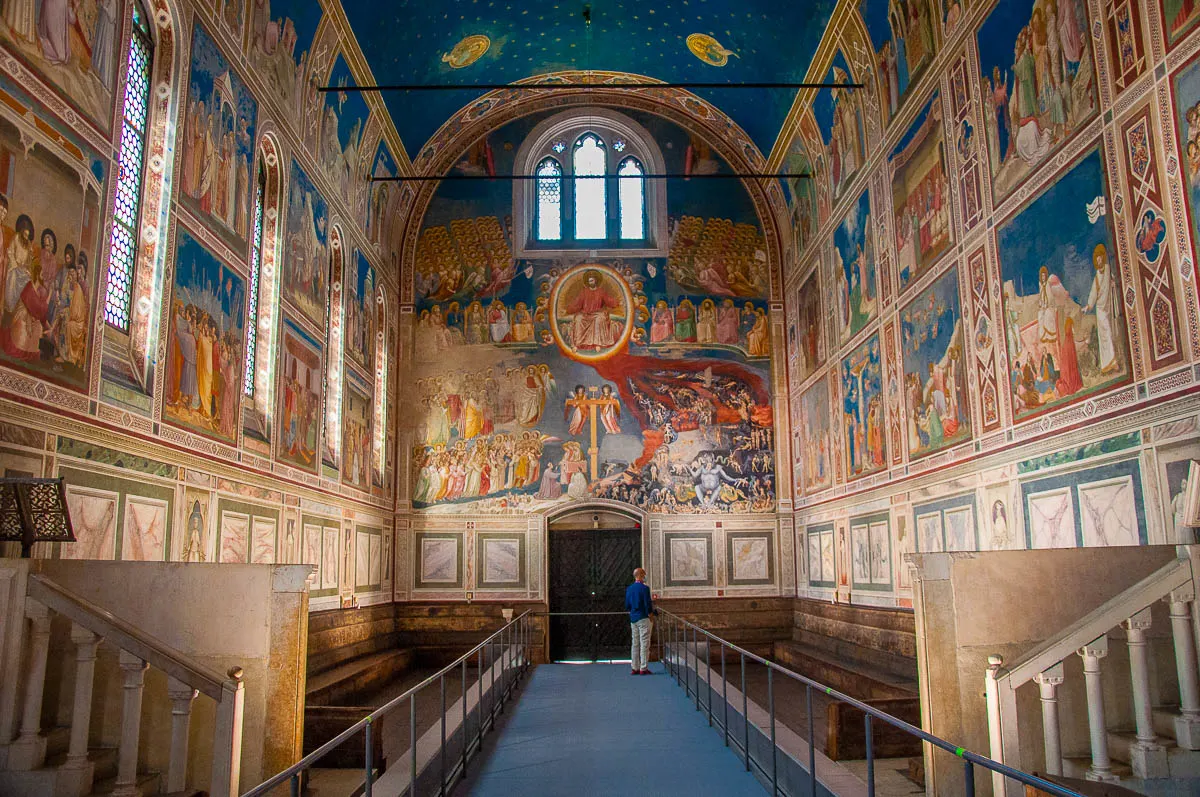
Suggested Time to Spend Here: 1 h
There are many things to see in Padua. Nothing shines quite as bright as the city’s Scrovegni Chapel.
This rather plain on the outside small chapel hides inside one of the most stunning pictorial cycles in the world. Painted around 1305 by the Florentine artist Giotto and his students, it is universally accepted by art historians that the Scrovegni Chapel’s frescoes sparked the Italian Renaissance.
Under a ceiling painted in blue and dotted with gold eight-point stars, your eyes will follow the Biblical story of Jesus of Nazareth depicted in beautifully symmetrical panels and expressing human emotions in a way that was unheard of until then. And while the religious side of it all may not necessarily appeal to your mind, the expressiveness and the humanity of the frescoes will resonate with your heart and you may end up finding answers to important questions that for ages may have been running through your head.
There are many superlatives that can be written about the Scrovegni Chapel and its depictions of heaven/hell and human life caught between both. It is a sight that has to be seen in Padua. You cannot leave the city without experiencing it for yourself.
The Scrovegni Chapel can only be seen as part of a guided visit which lasts around 20 mins. You also need to book it in advance. The chapel is very popular and tickets sell out quickly. To avoid disappointment, the best thing to do is to book your ticket as soon as you know on which day you will be in Padua. This way, you will be able to choose the right time slot to also give you a chance to follow this itinerary as it is above.
Customarily, the Scrovegni Chapel closes at 7:00 pm. On special occasions, it remains open until 10:00 pm and between 7:00 pm and 10:00 pm, you can book a guided visit to the chapel that lasts 40 mins. Such events are known as Giotto sotto le stelle (Giotto under the Stars), so keep an eye on the official website in case such a visit is on during your time in Padua, as it’s really worth it.
The ticket for the Scrovegni Chapel also gives you access to Padua’s Eremitani Civic Museums. They are a treasure trove for art, archaeology, and history lovers. To explore them in some depth you will need at least a couple of hours. Ideally, more.
This itinerary covers strictly a day trip to Padua (assuming that you cannot spend more than a day in the city), so it is structured in a way to help you explore Padua’s historic centre, see its most important and exciting sights, and feel its vibe as authentically as possible.
As such, I haven’t put much time aside for the Eremitani Civic Museums. They usually close at 7 pm, so after your visit to the Scrovegni Chapel, you can use the rest of the time to have a very quick look around the museums. Or, if you are lucky and there is a Giotto sotto le stelle event on the day of your visit, you can book a ticket for the Scrovegni Chapel for after 7:00 pm and utilise the time between 6:00 pm and 7:00 pm to explore the Civic Museums.
In any case, in order to properly see the collections of the Eremitani Civic Museums and cover all of the sights on the itinerary above, it is preferable to spend two days in Padua, Italy.
Official websites:
Finish
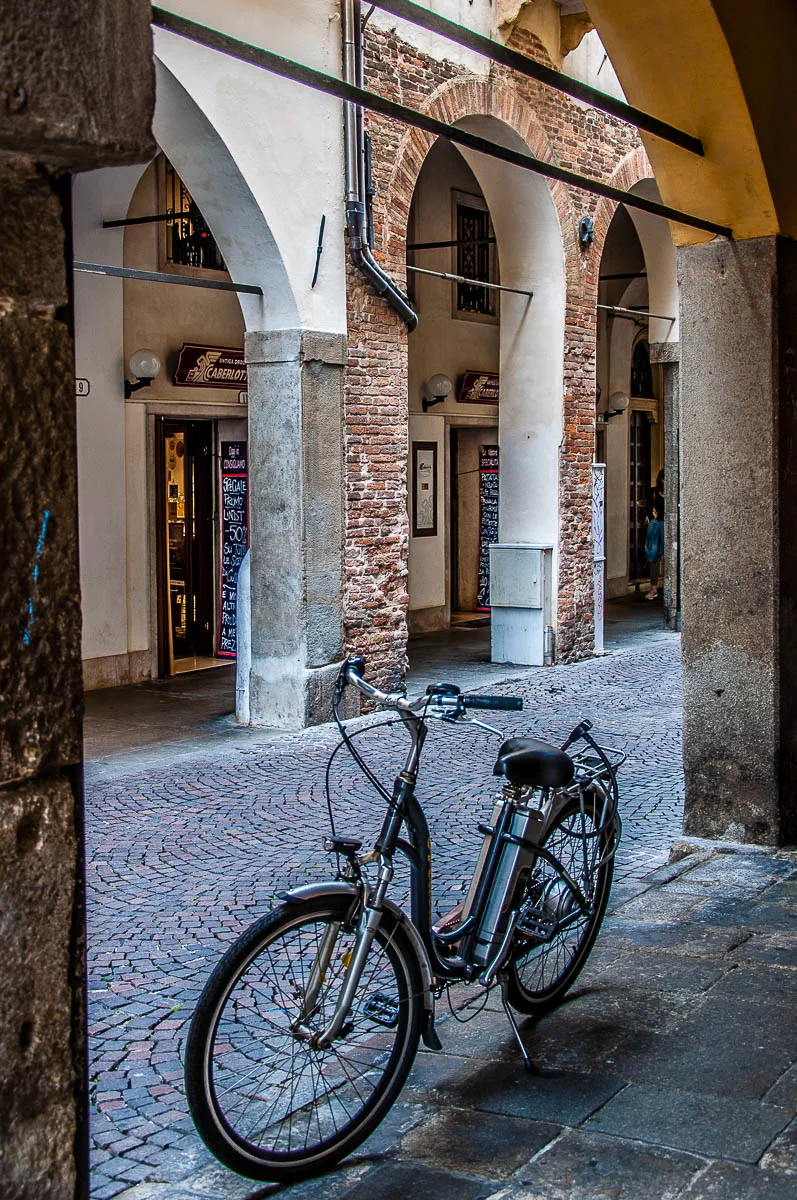
Well done!
What an amazing day you just had exploring Padua! With a heart replete with beauty, history, and art, it’s time to say good-bye to this often shunned but so rich in sights and experiences Italian city.
Head to the car park or, respectively, the train station. Click on the highlighted words to access walking maps with directions. Alternatively, you can take the tram for one or two stops to your final destination for the day.
Map of the 13 Best Things to Do in Padua, Italy in One Day
Practical Do’s for Your Day Trip to Padua, Italy
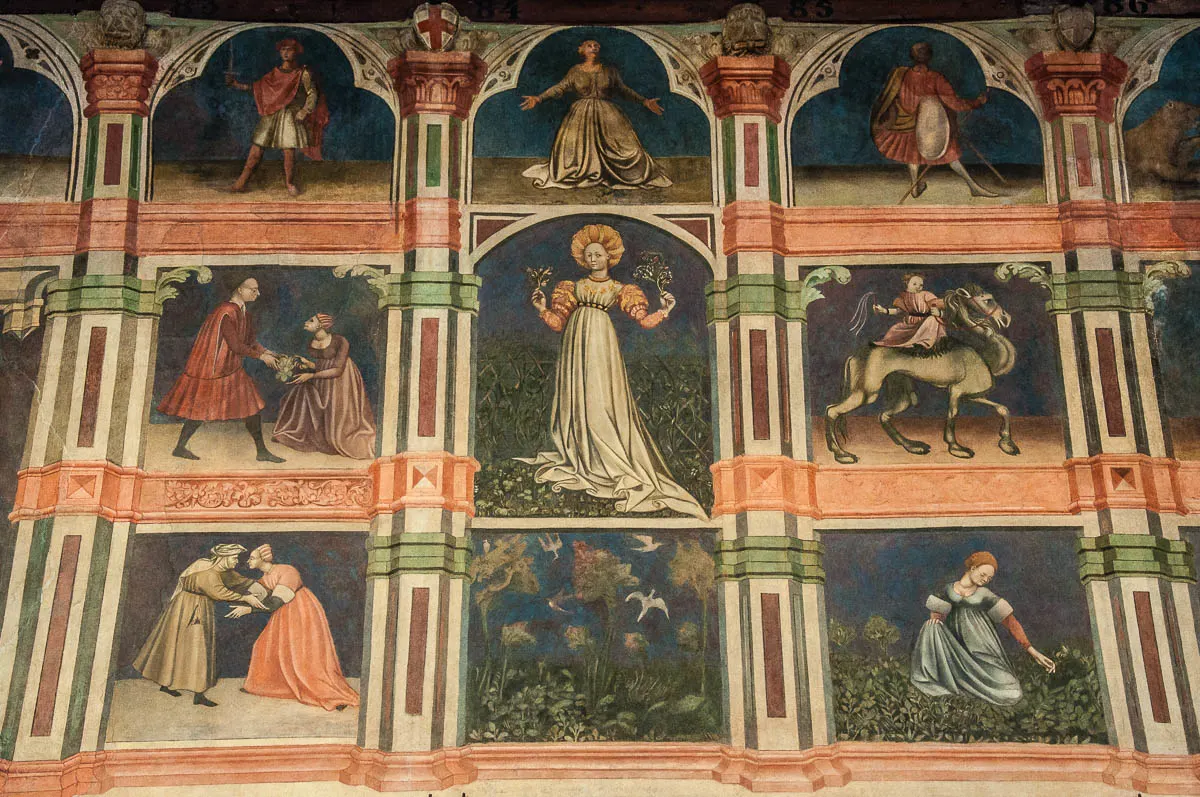
Do take this itinerary as a suggestion. You can tick off as many or as few of its points as you want. The itinerary is constructed to easily take you from one sight to the next in the most logical and quick way thus saving you unnecessary crisscrossing of Padua’s historic centre several times. Opening hours have also been taken into consideration so that you can visit all of the above sights one after the other provided you book in advance the most popular ones and adhere to the itinerary’s suggested timetable.
Do check the most up-to-date opening hours of the museums and sights you are interested in on their respective official websites (links provided above) prior to your visit to avoid disappointment in case of extraordinary closures or limited opening times.
Do book the most famous sights like the Scrovegni Chapel and Palazzo Bo well in advance in order to be able to follow (if you so wish!) the logical order of the itinerary above.
Do wear your most comfortable walking shoes. This is an intensive itinerary and Padua has a lot of ground for you to cover. Even if you shave portions off this itinerary of the best 13 things to do in Padua in one day, feeling comfortable when walking around is a great feeling.
In summer, do wear sun protection and bring a bottle of water with you. Padua can get really hot and the bright sun can feel rather blinding after a while.
Do check the weather forecast in advance. If rain is expected, don’t let it change your mind about visiting Padua. The city looks very atmospheric in the rain and its long porticoes (basically, pavements with ceilings above) make it easy to traverse the historic centre without getting drenched.
In Conclusion
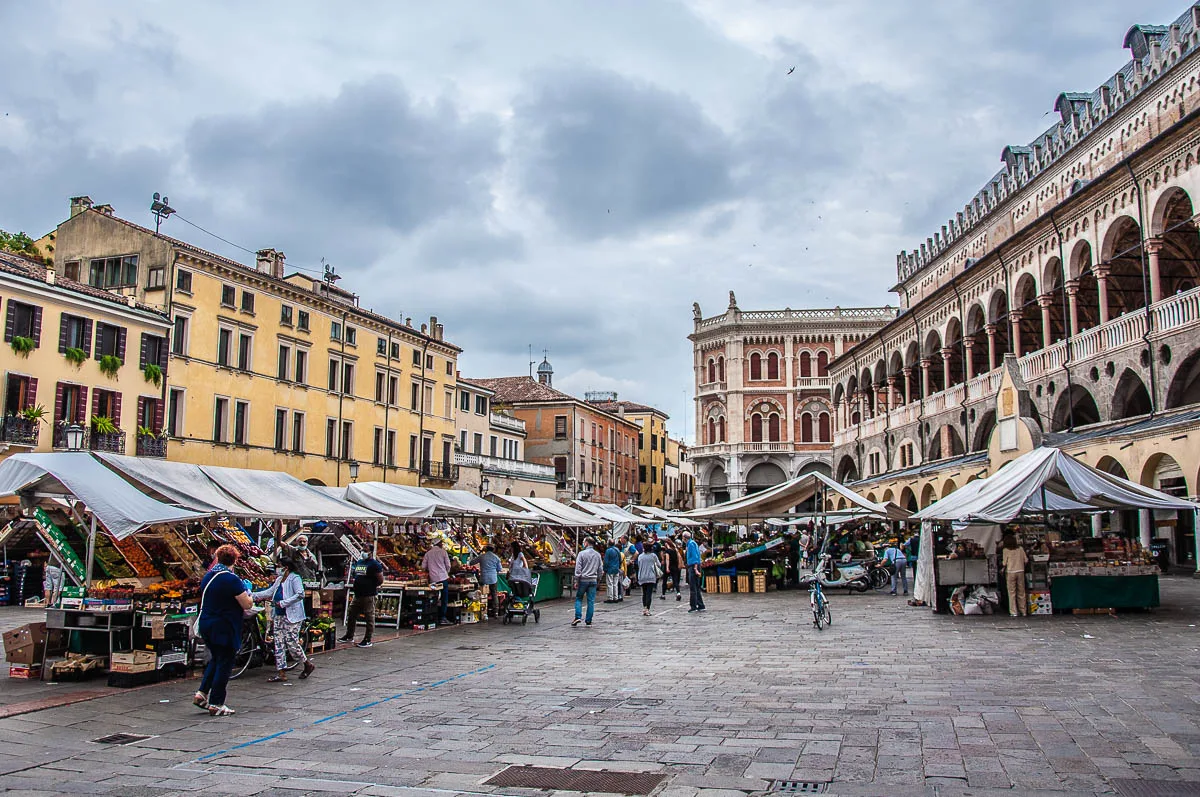
Padua is a millennia-old city in Italy. You will find it sandwiched between the tourist magnets of Venice and Verona in the Northern Italian region of the Veneto.
The city has an incredible plethora of sights to see and explore yet it stays off the beaten tourist track. Visiting it is a chance to experience the art, history, and food of Italy in the most authentic and local way.
The above blog post provides you with a detailed itinerary to follow on a day trip to Padua. All of the city’s major sights are covered – from the world’s first academic botanical garden to the fully frescoed Scrovegni Chapel which is considered to have sparked the Italian Renaissance.
The itinerary is structured in a logical way so that you don’t have to crisscross the city time and time again and thus waste precious sightseeing time. Suggested times are provided for each sight and are coordinated with each sight’s current opening times and guided visits/tours.
In addition, I have included many details giving you a clear idea as to what you can expect to see and why it is worth it to visit the sights on the above itinerary. A shortlist with practical do’s while in Padua on a day trip rounds off this blog post.
I hope that you will find it useful and that you will love discovering Padua in Italy for yourself.
More Helpful Links
- Padua, Italy – 101 Facts about the City of the Saint
- 10 Reasons to Visit Padua, Italy – A Must-See Italian City
- Best Things to Do in Padua, Italy – Story
- Exploring Padua: Palazzo della Ragione
- Padua’s 800 Years Old Market
- Cornaro Loggia and Odeon in Padua, Italy – History, Architecture, and Art
- Padua in the Run-Up to Christmas – Festive Lights, Chocolate, and Egyptian Artifacts
- Padua’s Astronomical Clock – Where Time, History, and Science Await You
- Sant’Antonio’s Cakes in Padua, Italy – The Story of the Sweets of the Saint
- Padua’s Botanical Garden and the Basilica of Santa Guistina – A Great Contrast of New and Old
- Day Trips from Padua, Italy – Over 35 Unmissable Destinations in the Veneto, Lombardy and Emilia-Romagna
- Best 12 Towns to Visit around Lago di Garda – Italy’s Largest Lake
- Lake Garda with Kids or The Best 11 Things to Do at Lake Garda for Families
- 30 Days of Adventures in the Veneto, Italy – #30daysofadventures
- Top 15 Places to Visit in the Veneto, Italy – The Ultimate Guide
- 20 Best Things to Do and See in Verona, Italy in One Day – The Ultimate Itinerary with Photos and Tips
- 25 Best Things to Do in Vicenza – Northern Italy’s Hidden Gem
- 18 of the Best Cities to Visit in Northern Italy (With Travel Tips and Nearest Airports)
Thank you for reading! Please, leave me a comment, pin the image below or use the buttons right at the top and at the end of this blog post to share it on social media.
For more useful information like this, please, like my blog’s page on Facebook and subscribe to my strictly no-spam newsletter.
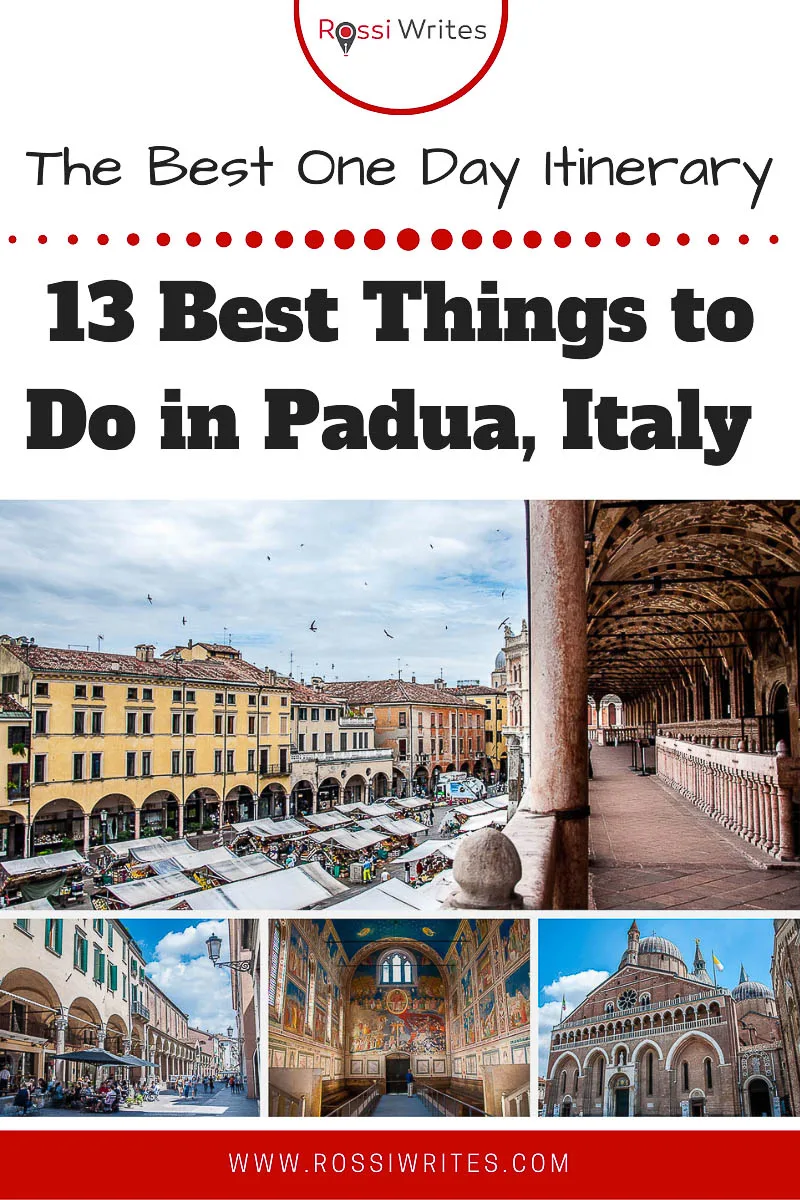

Amanda Adams
Sunday 9th of April 2023
Thanks so much for sharing the amazing itinerary for Padua. Me and my daughter spent the day there yesterday whilst on a mini break to Venice from the UK. We didn't get to do all 13 but selected about seven. It was really helpful - the 4-layered coffee experience was just brilliant. I used all your Google links throughout my day, everything went so smoothly so thanks again for sharing your knowledge. Amanda and Leena.
admin
Monday 10th of April 2023
Many thanks for your kind words! I am so pleased that you enjoyed visiting Padua! I really miss going to Pedrocchi for a coffee. It's raining in England at the moment. So, have a great time in Venice! Best wishes,
Rossi :)
David Scott
Thursday 24th of September 2020
Brings back so many great memories as my wife and I lived in Padua for 4 years 2002-2006. Loved it. We went to the market most Saturday mornings riding our bicycles. Of course there are many wonderful restaurants too. Good job.
admin
Friday 25th of September 2020
Thank you for your kind words, David! Your memories of Padua sound idyllic! Best wishes,
Rossi :)